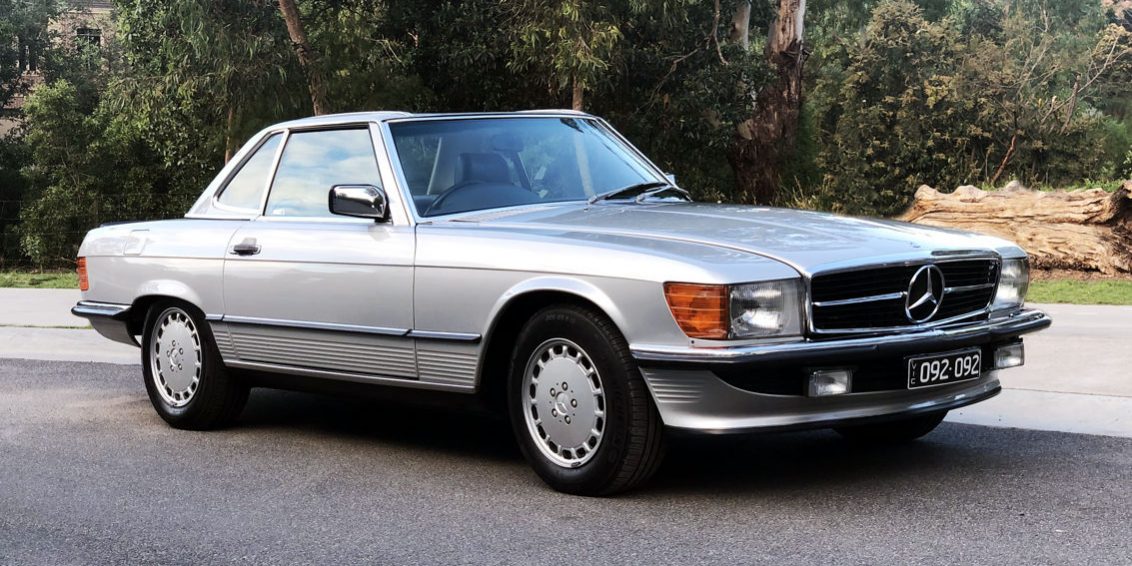WOLF retro DESIGN REVIEW. 31st December 2020
A retro review looks at products that are at least over ten years old from a present-day WOLF design perspective. While the technology and fashion of the period influence design, and are taken into consideration, great design ideas will transcend their eras to be timeless.
Interesting and factual information may be provided, but our review aims to deliver insight from the perspective of a designer’s mind and eyes.

An iconic SL grin.
Introduction
Product description
The 560SL was the last variant of Mercedes third generation of SL sports cars. Designated by code as the R107 this SL was produced from 1971 to 1989, evolving through several engine variants that culminated with the 560SL. Being the last of the range and with the more powerful engine the 560SL is highly sought after and often more valuable.
Price and Availability.
The 107 Mercedes was a popular and successful sports car and have survived in significant numbers especially in the USA. At the time of this review, good 560SL cars start from $55,000 (Aust) and can extend well past $100,000 for near mint examples. Low mileage original examples are particularly sought after as these cars are not only collectible but still very practical and modern to drive.
Additional information
The 107 Mercedes had a production run of 18 years which (after the G-wagon) was one of the longest of any Mercedes and even in comparison to other car makes. A face lift in 1986 with a front air dam improved the look until 1989 when the R129 made its debut. The 560SL model was only available to the USA, Japan and Australia, therefore most right hand drive 560SL cars went to Australia.
The R107 was featured in many 80’s movies such as Beverly Hills Cops, which helped make the car iconic.
Review
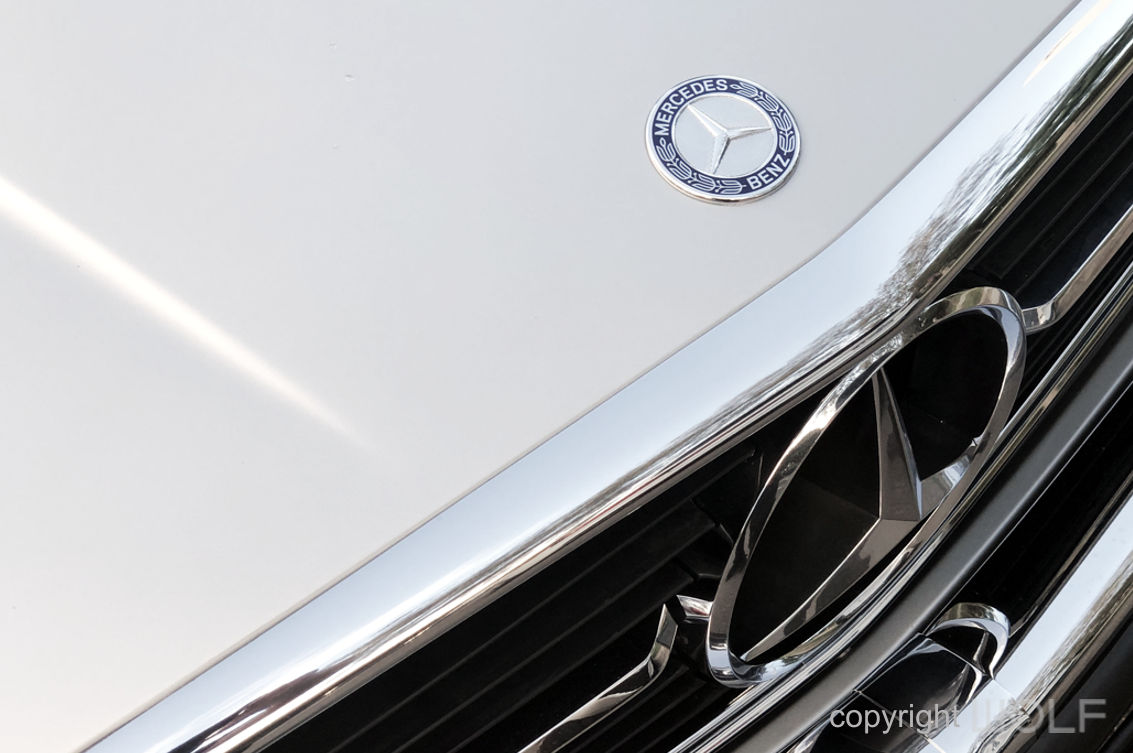
First impression/ Delight
The word that comes to mind is “Strong”. While not a large sports car by today’s standards this car was significant in size, strength and stability in its day. The R107 did away with curves in preference of straighter lines that keep the car parallel to the ground.
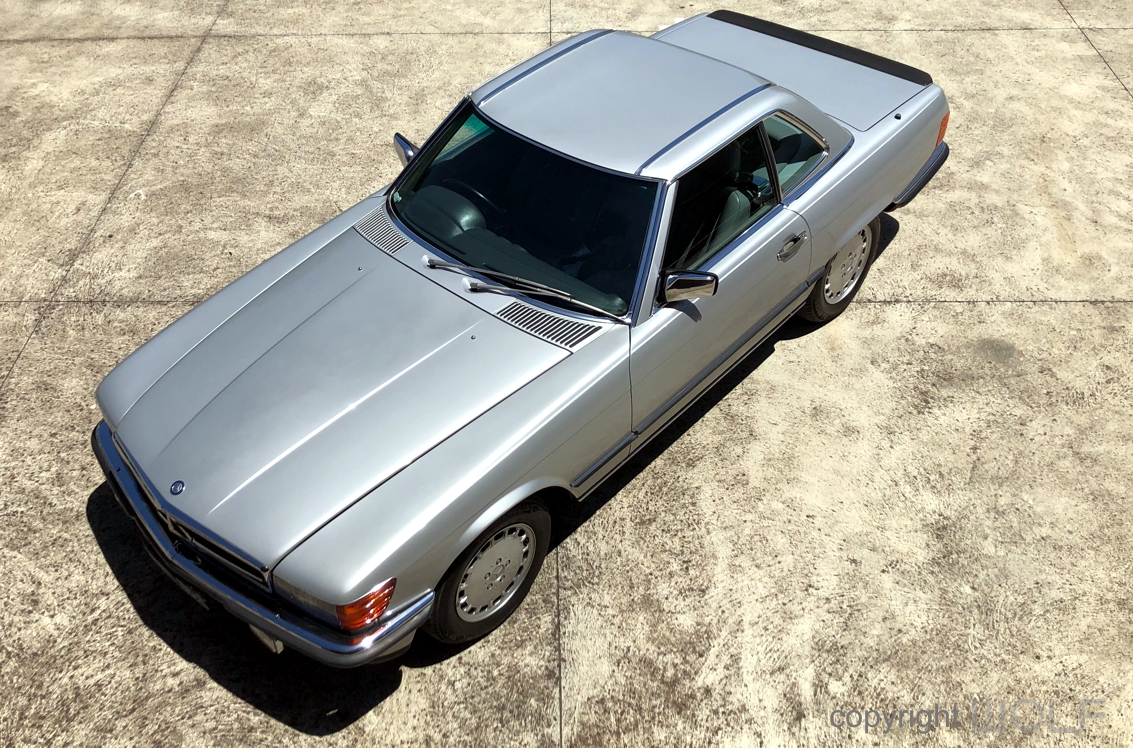
Exterior Design Review
This was Mercedes first sports car to do away with round lights in favour of rectangular ones. While this move to straighter lines was very futuristic in its day the car is certainly not sleek. In fact, this car would be rather bulky without its horizontal lines and chrome trimmings.
As with most Mercedes cars each detail is well considered and appear together as one language- the Mercedes language of practical engineering and beautiful design. Interestingly this car has retained the unique concave shape in its hard top roof, something that coined the nickname “Pagoda” in the precious SL model range.
From the front this SL maintains the large Mercedes grill with star in the center. It’s a classic SL grin with good presence. In our opinion the styling of the front is a little safe and we think the intersections between the headlight, front grill and bumper could have been resolved better. The face-lifted models look visually superior with the new lower air- intake design. It had more continuity with proportions and lines to its surrounding panels and overall made the car a little more aggressive.
The sides of the car have more character, with horizontal lines that runs right around the car. This is especially emphasized with the bands of several horizontal grooves on the lower side panels.
From the rear this car is dominated by large corrugated tail lights. This design is said to be self-cleaning and iconic to Mercedes in the 70’s and 80’s. The 560SL had a rubber spoiler on the boot that serves no real purpose and looks rather tacked on.
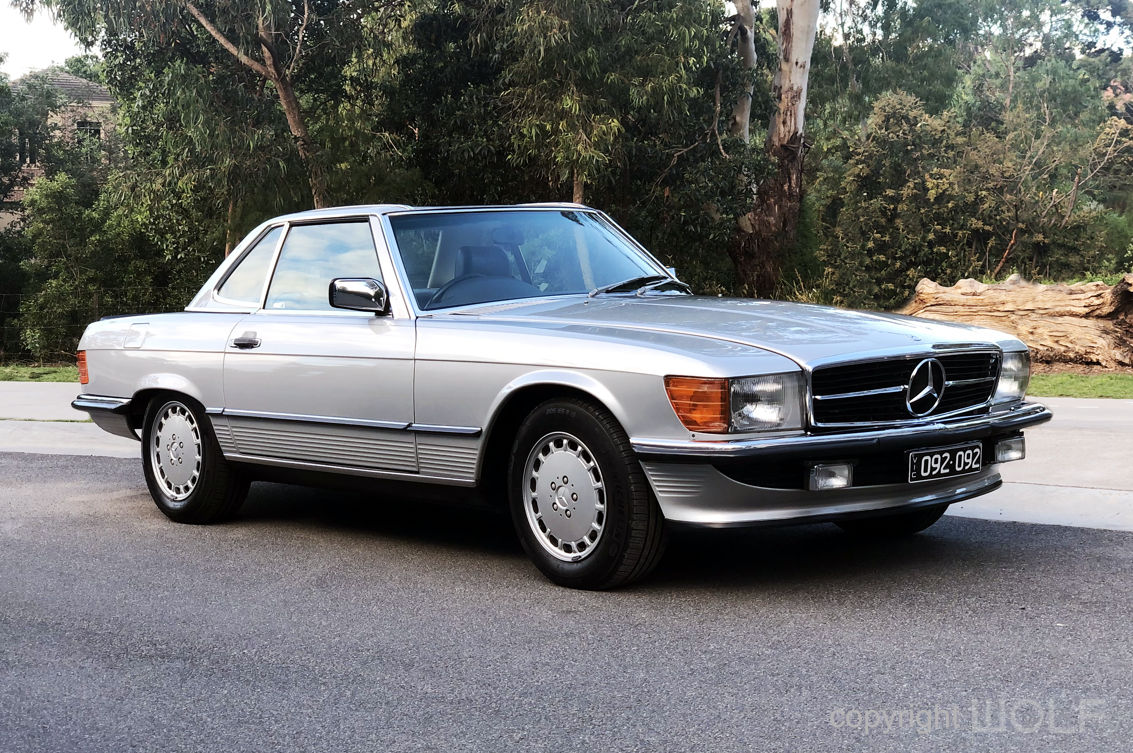
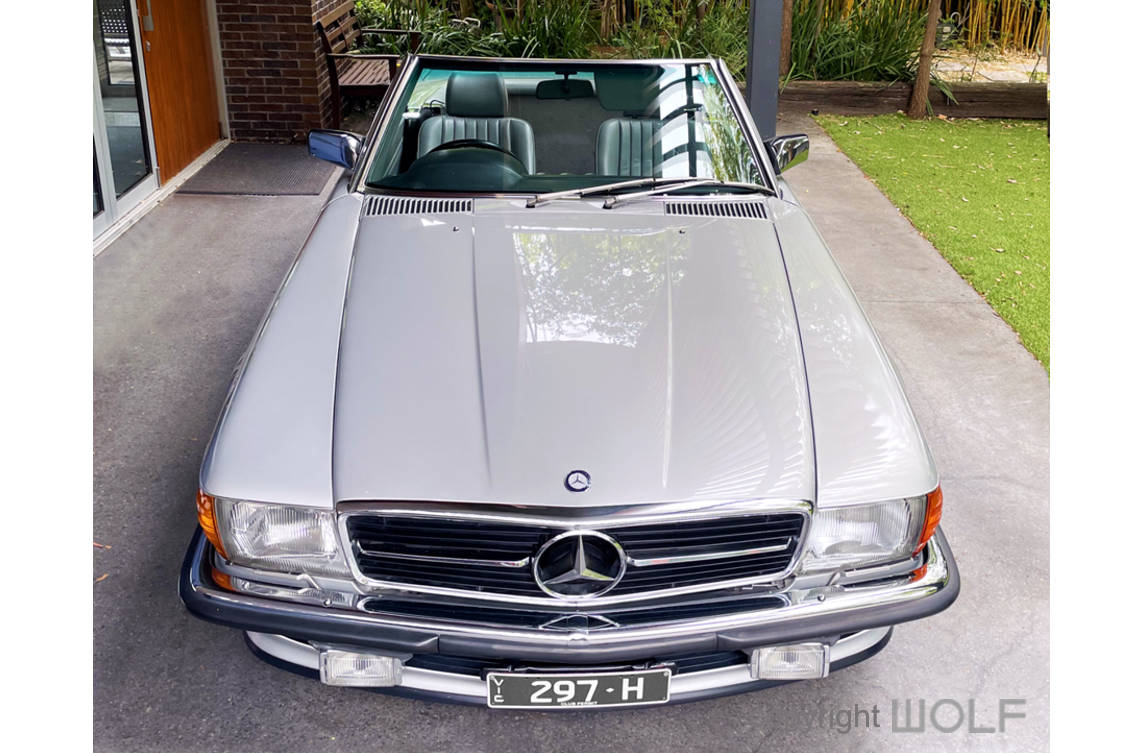
The horizontal lines below the front and side bumpers remain unique to the 107 SLs and help to reduce visual bulk.
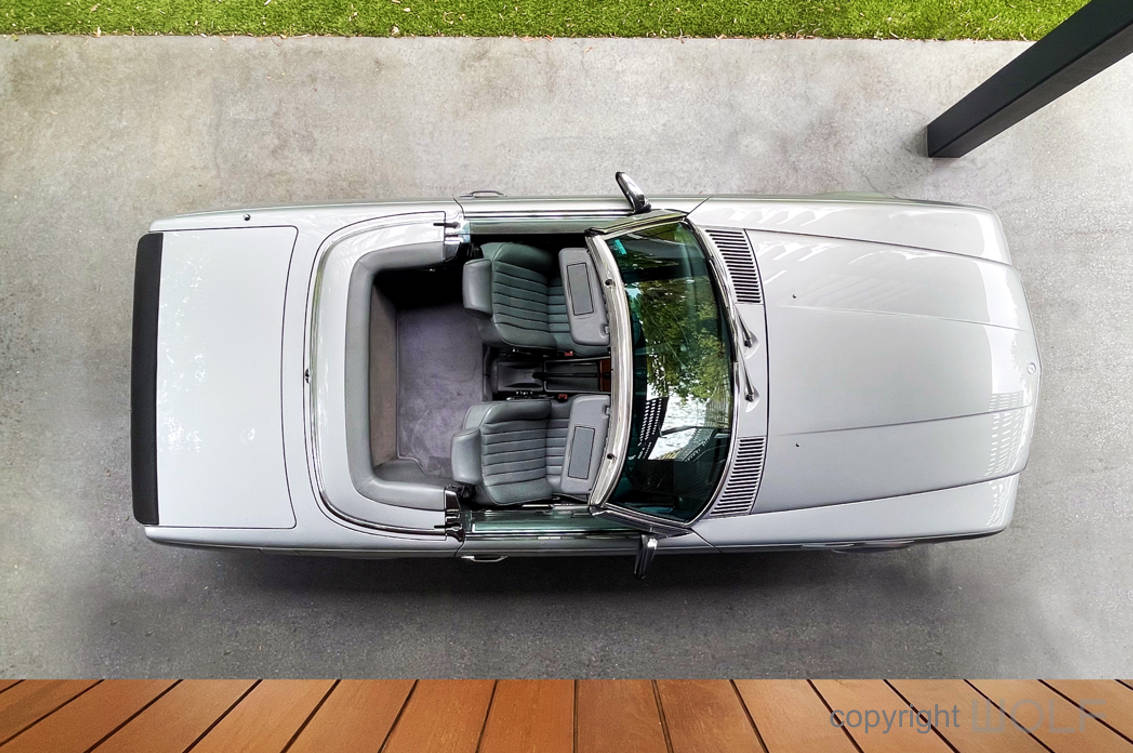
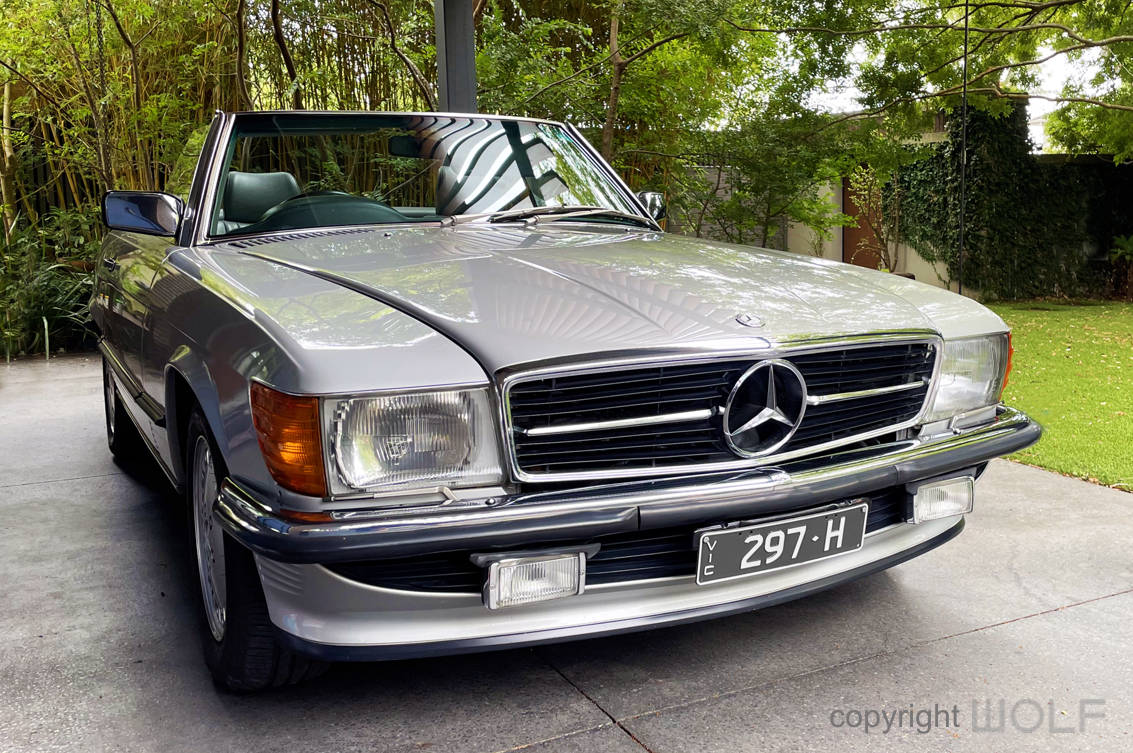
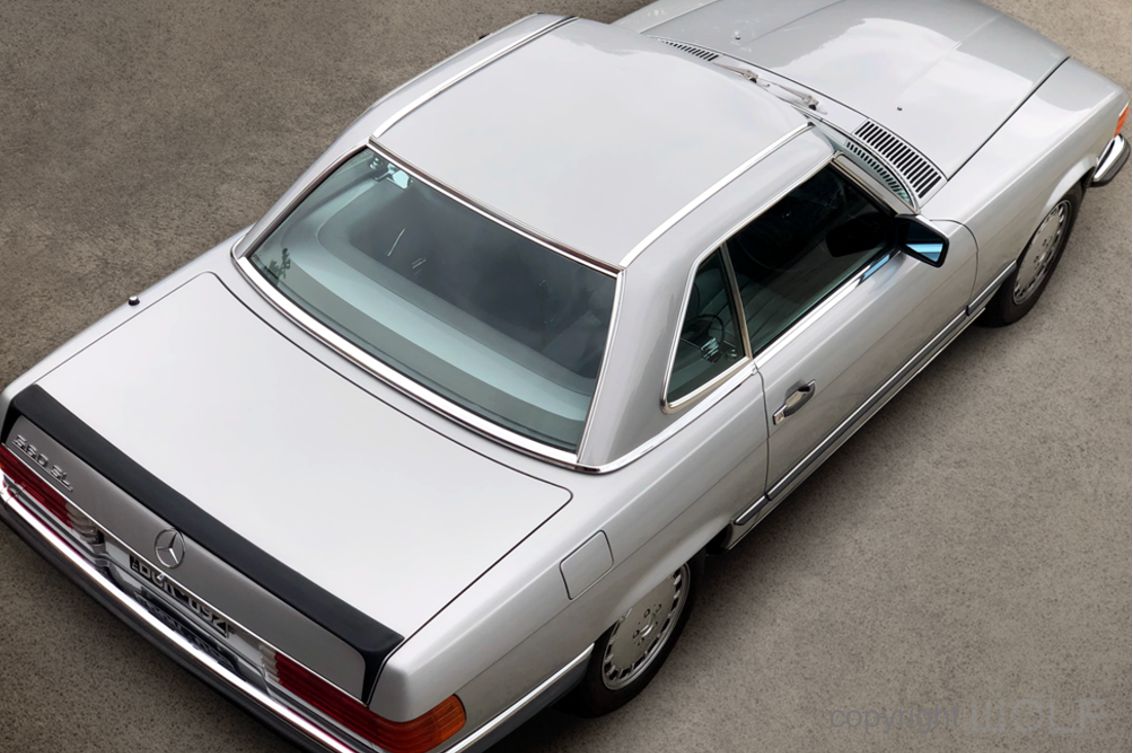
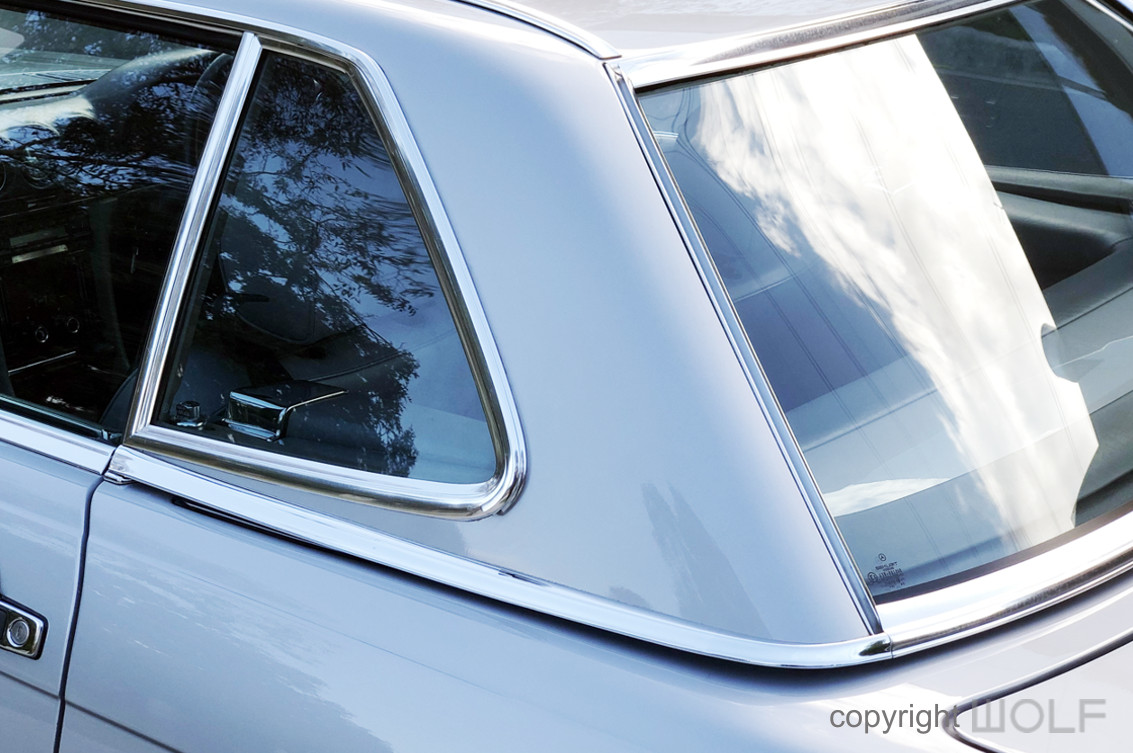
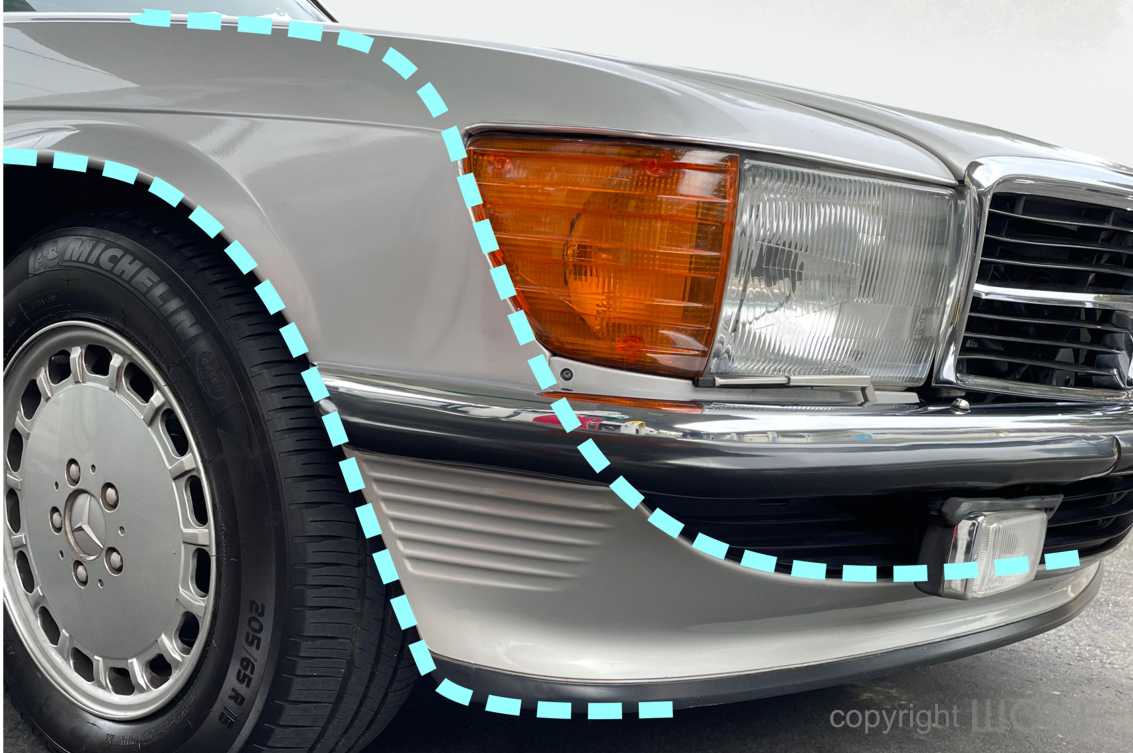
The new design to the lower air dam in 1985 was stroke of genius in our opinion. It greatly enhances the strength of the front while balancing and connecting more firmly with the cars side lines.
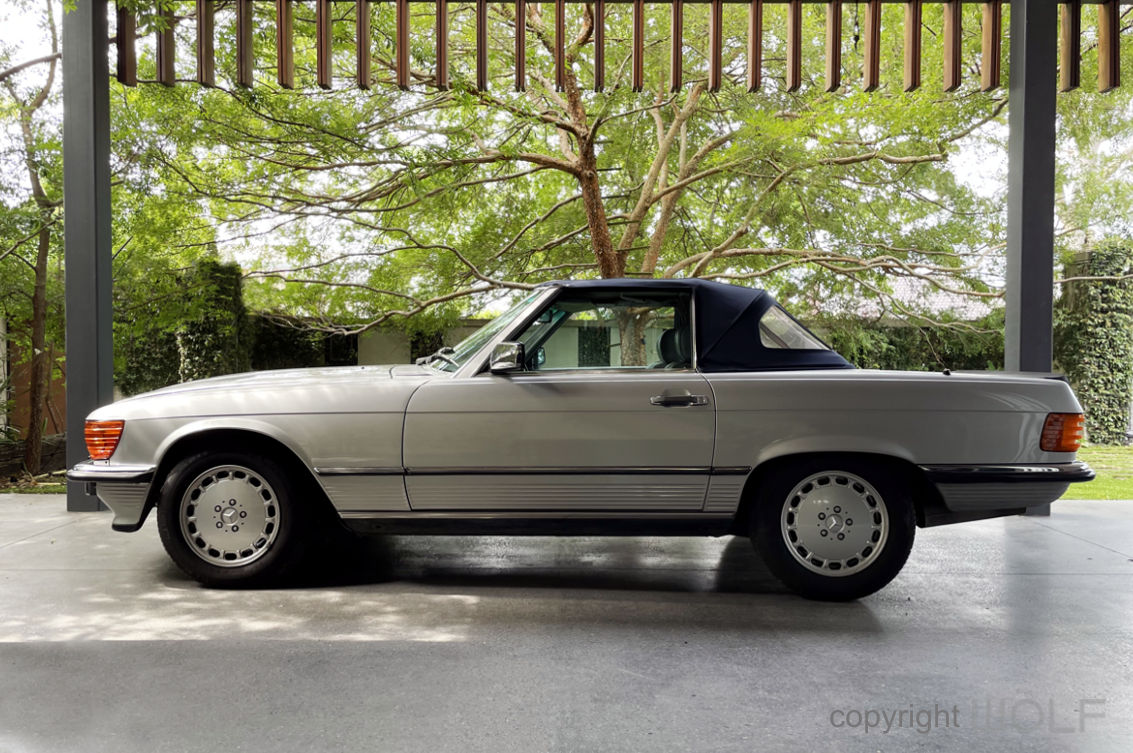
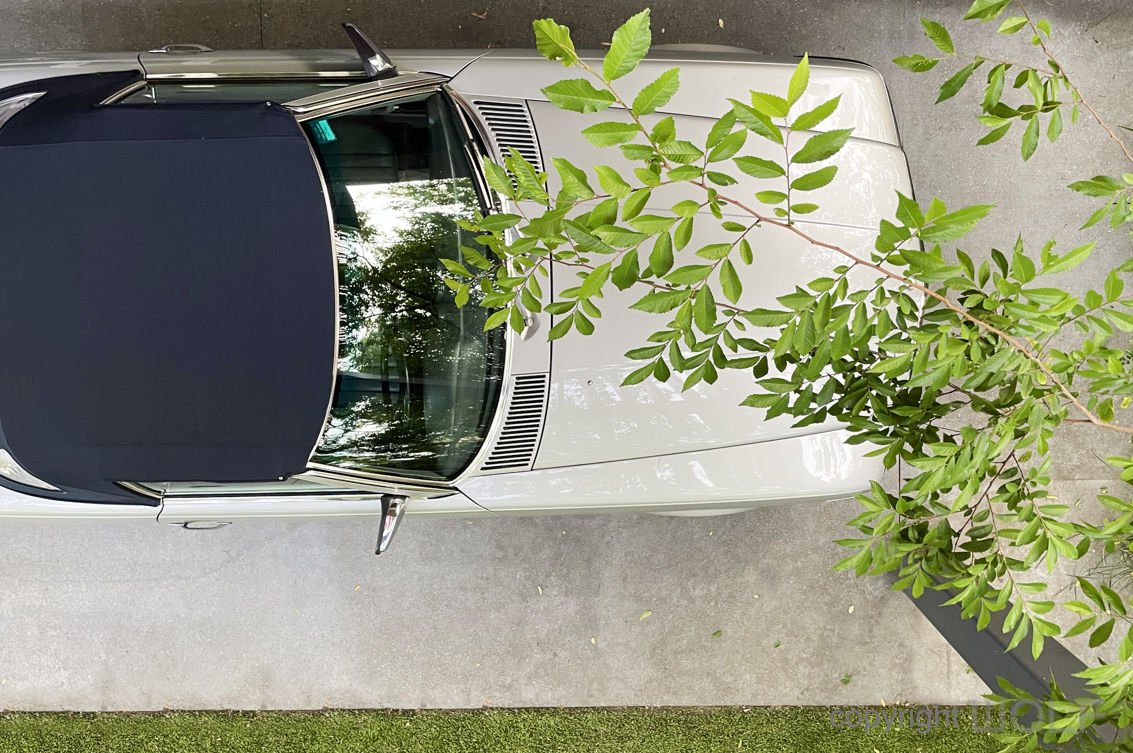
The roadster takes on quite different personality with the soft top in place.
Interior Design Review
So much of Mercedes styling in that era was influenced by safety. Internally all surfaces are considered from the perspective of crash safety so there are a lot of padded curved forms and rounded edges. It is conservative by any sports car standard and nothing particularly grabs your attention or looks out of place. Genuine wood veneer panels with chrome trimmings give the feeling of luxury without being ostentatious. The face-lifted models from 1986 onward had two toned vinyl dashboards with the upper section usually darker than the lower section. This gave the interior a slightly sportier look though rather safe in our opinion.
The seats and side panels were designed for long trips, so were more about comfort than shape or colour. There was an option to have Karo seats which incorporated a patterned fabric. In our opinion they made the car look more traditional but some people would say they gave a sportier look. Over time the interior has evolved from looking modern to classic but in our opinion it still feels rather basic despite the wood and chrome trimmings.
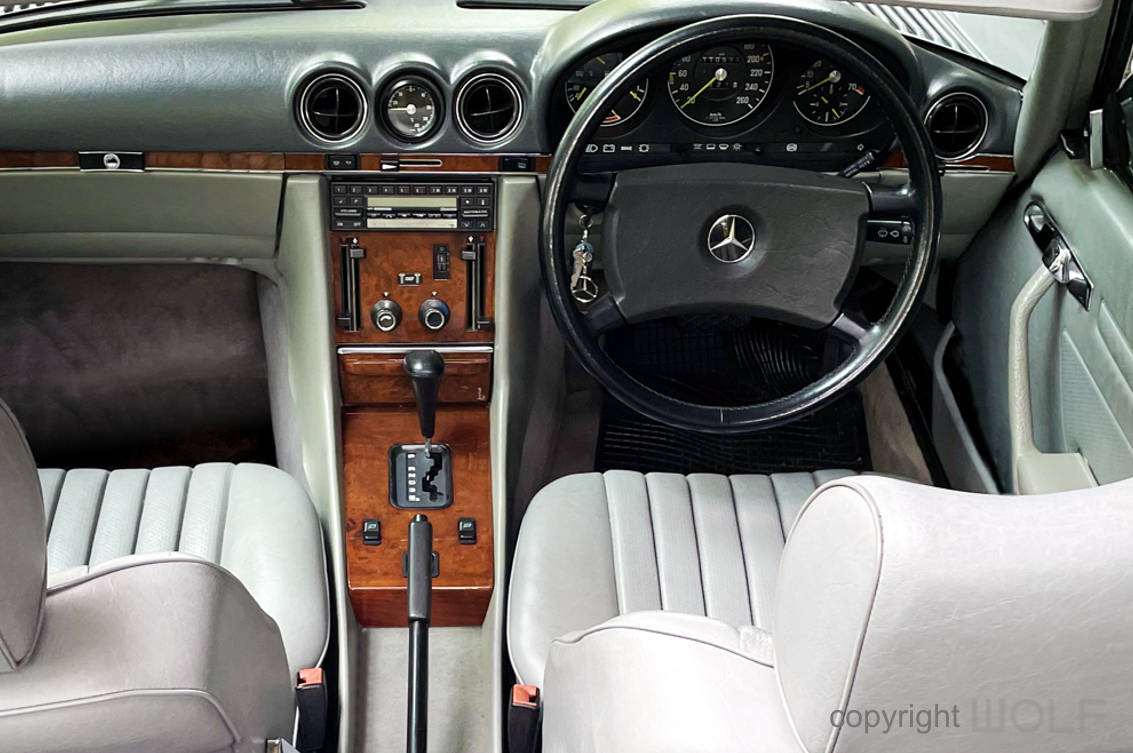
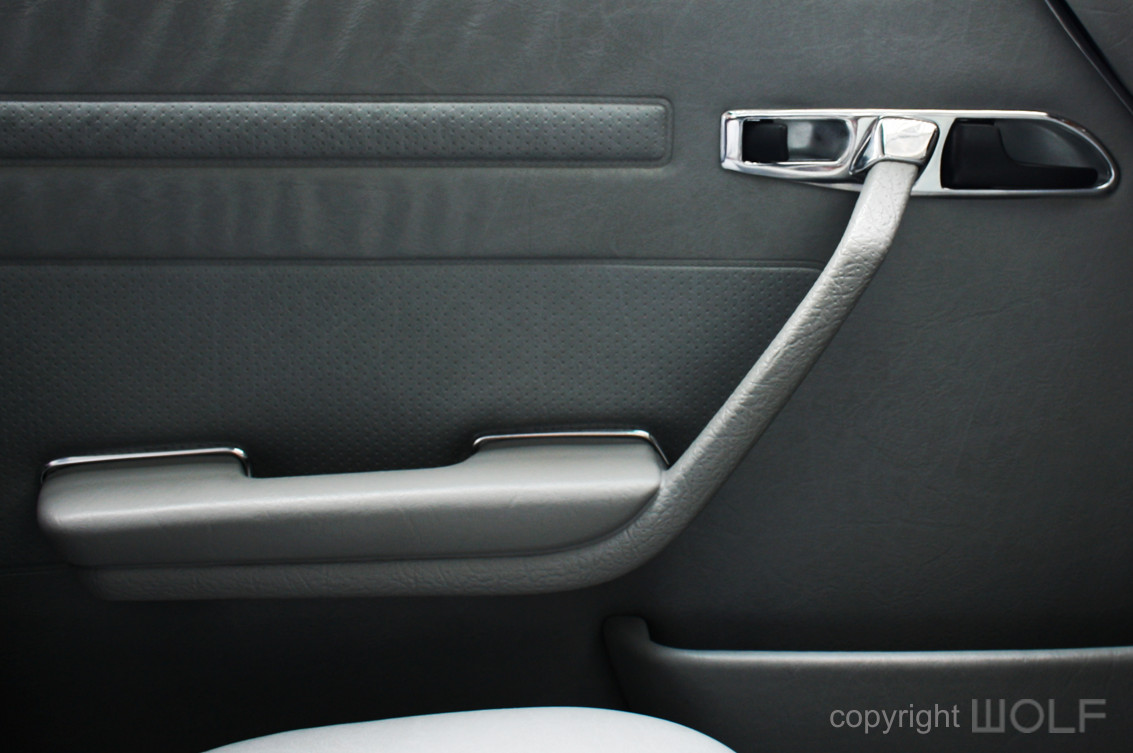
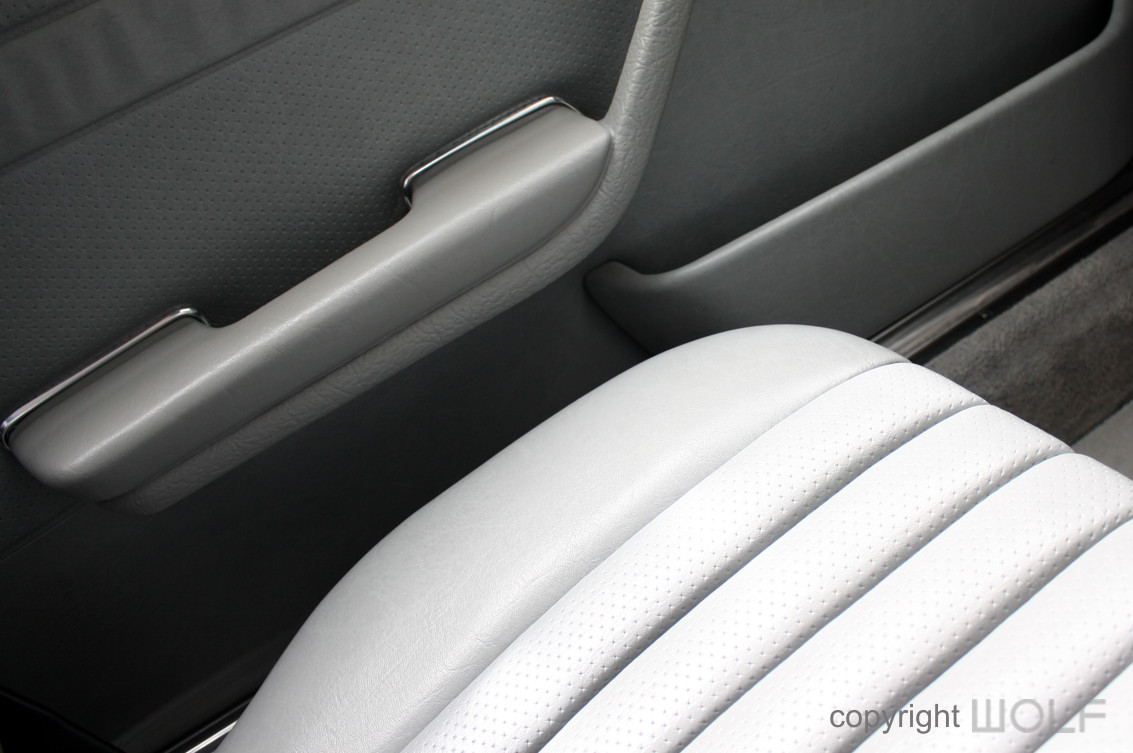


Craftsmanship.
These cars were nicked named the Panzerwagen (Tank in German) when it was developed because it was incredibly solid and heavy for a sports car. Walking around the car you sense its build quality in the way it feels and sounds. The metal is thick and there is a definite stiffness about the way the car stands. The substantial doors close with real conviction and you wouldn’t want to get a leg or finger caught in the process.
This car was is a great example of German engineering at it’s finest and is why so many examples survived in good condition.

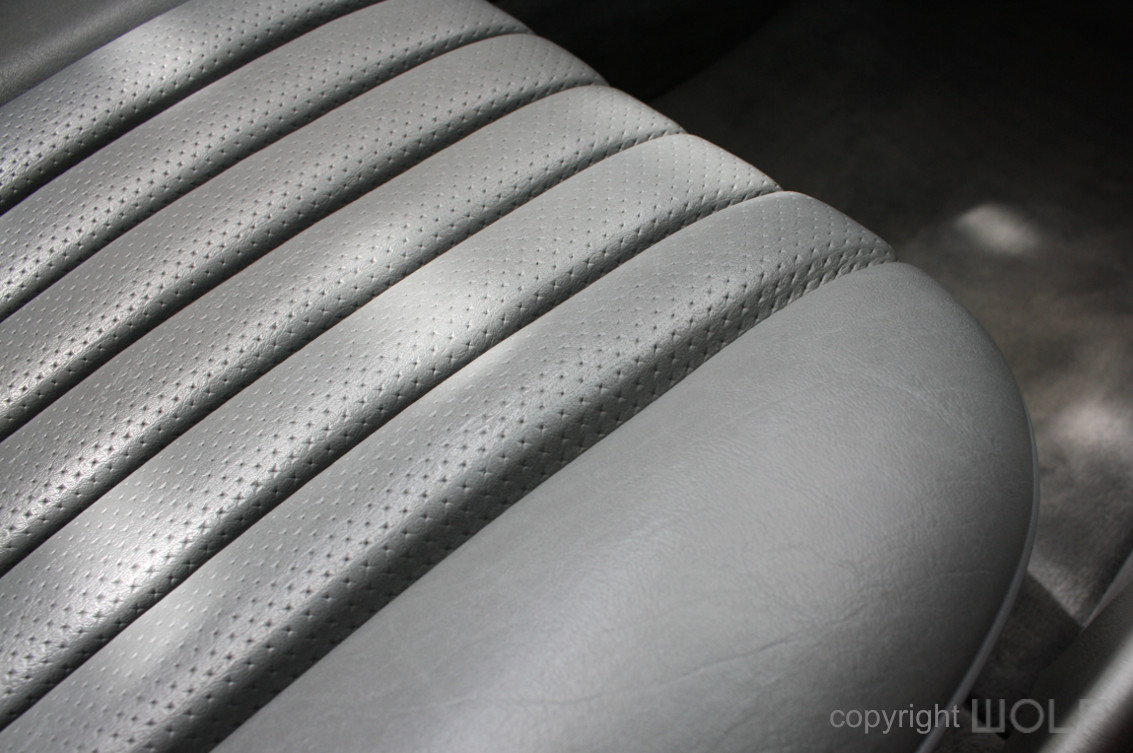
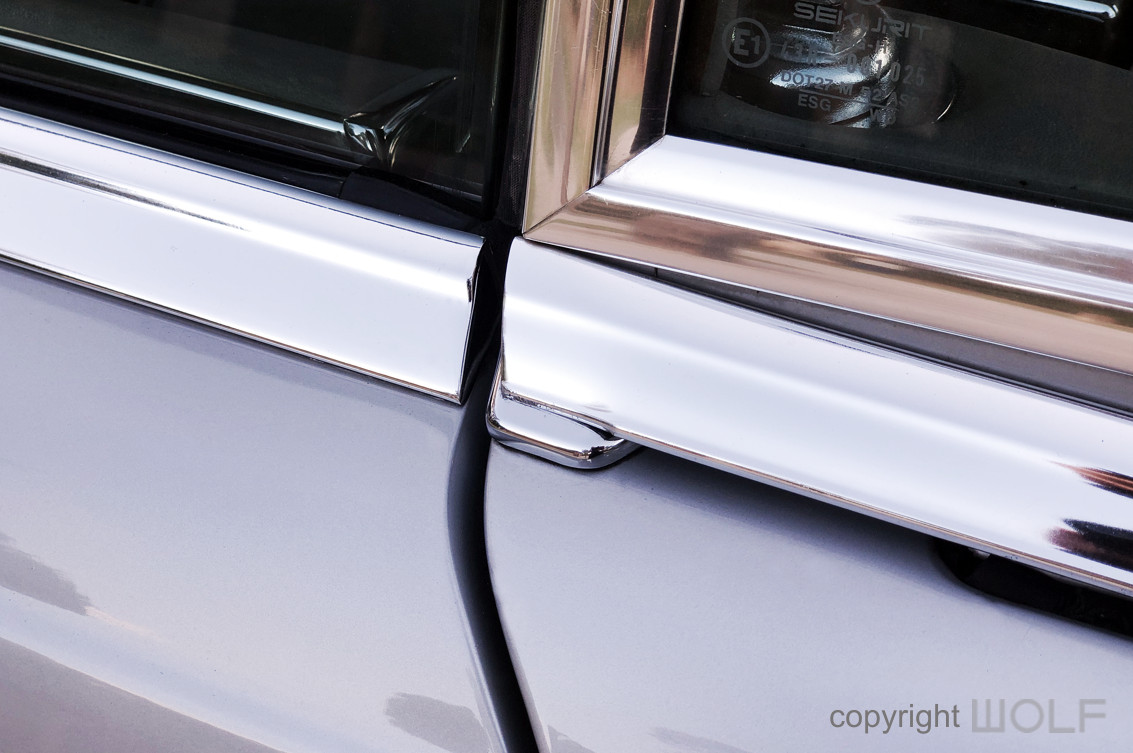
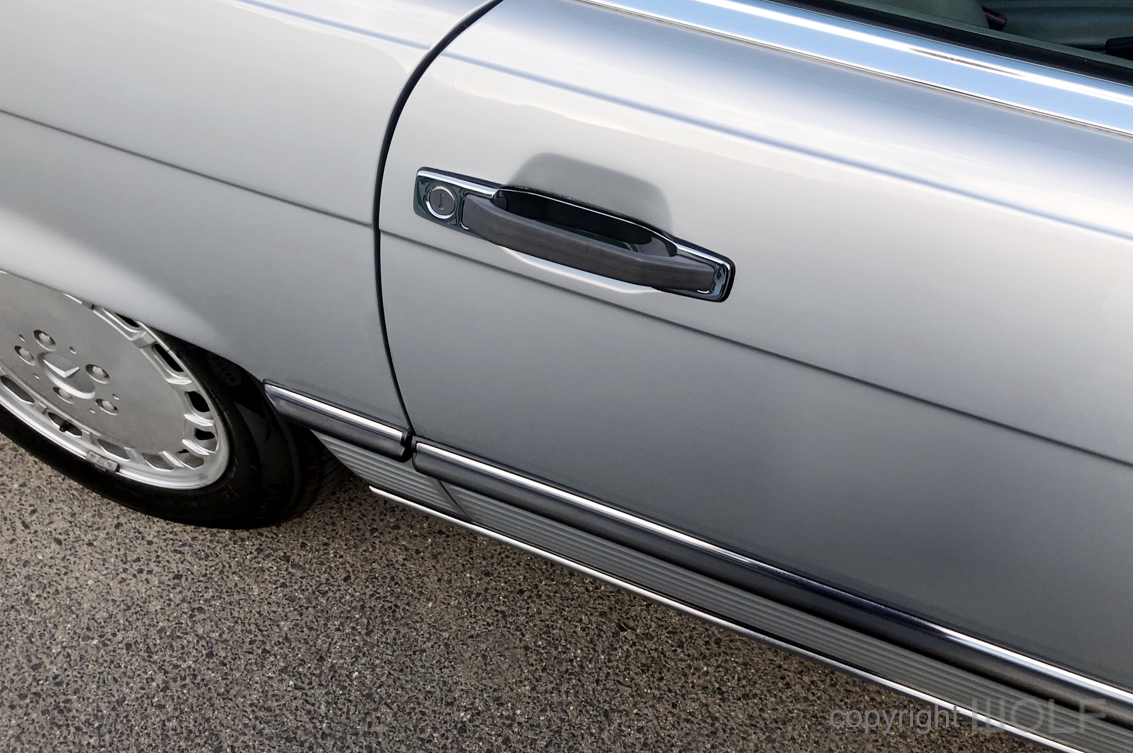
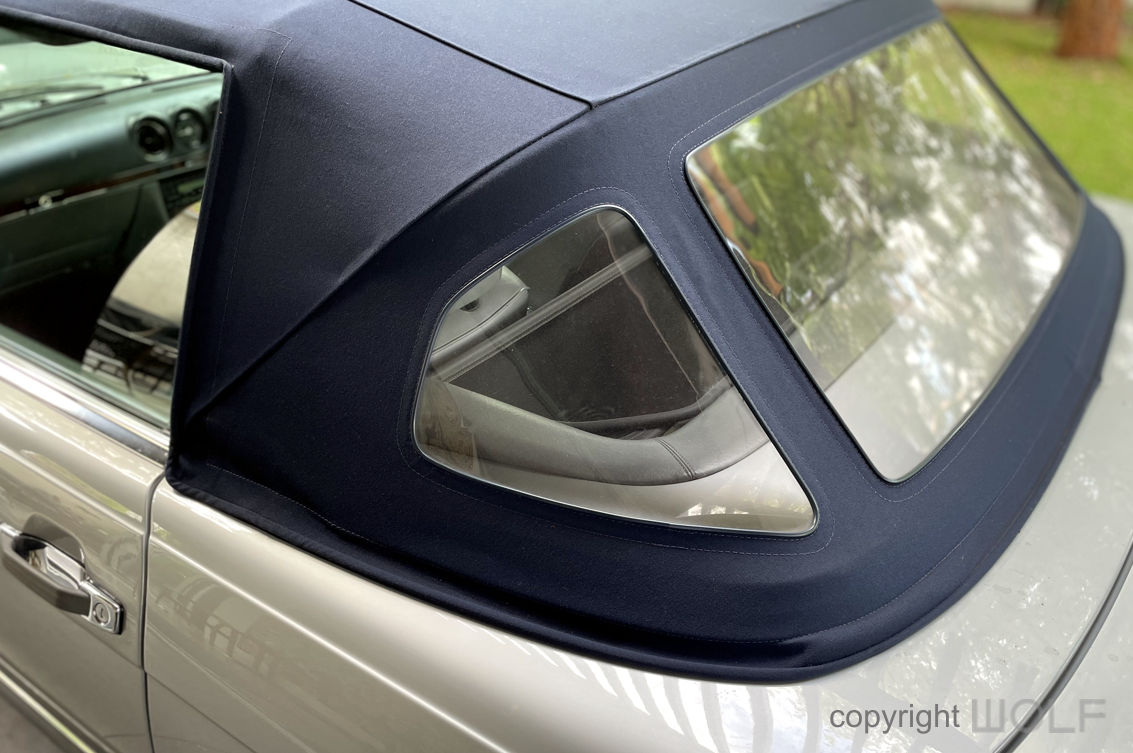
Function – Experience.
As with the previous SL, this was considered an open tourer as opposed to a fast-grunting sports car. It was the car you drove around all day in comfort and style. While not loud and low to the ground like a Porsche, the 560SL in this review is still very fast and fun to drive. The drive is smooth and effortless. The 107 SL cars also made you feel very safe behind all their safety features.
Removing the hard top is a serious procedure that requires at least two strong people, however the soft top is relatively easy to put up and down. The steering wheel on this car has a steering wheel of 410 mm which is quite large and makes entry and exit a little tight. Apart from that all other controllers are within reach and easy to use.

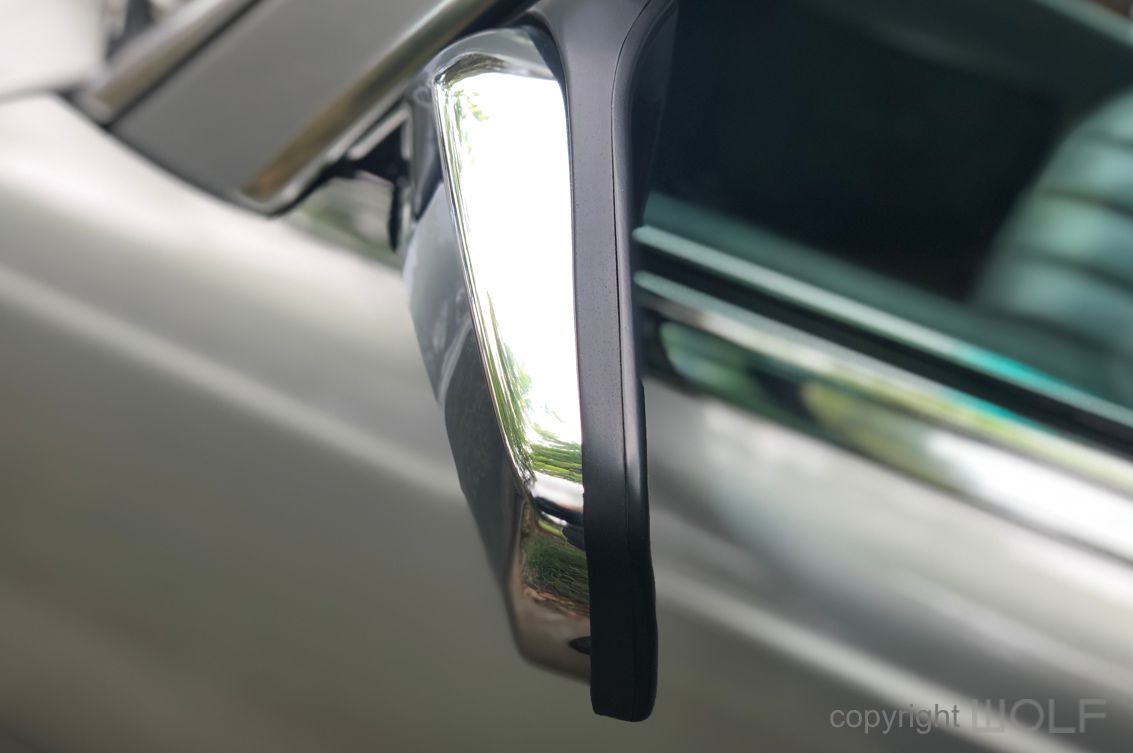
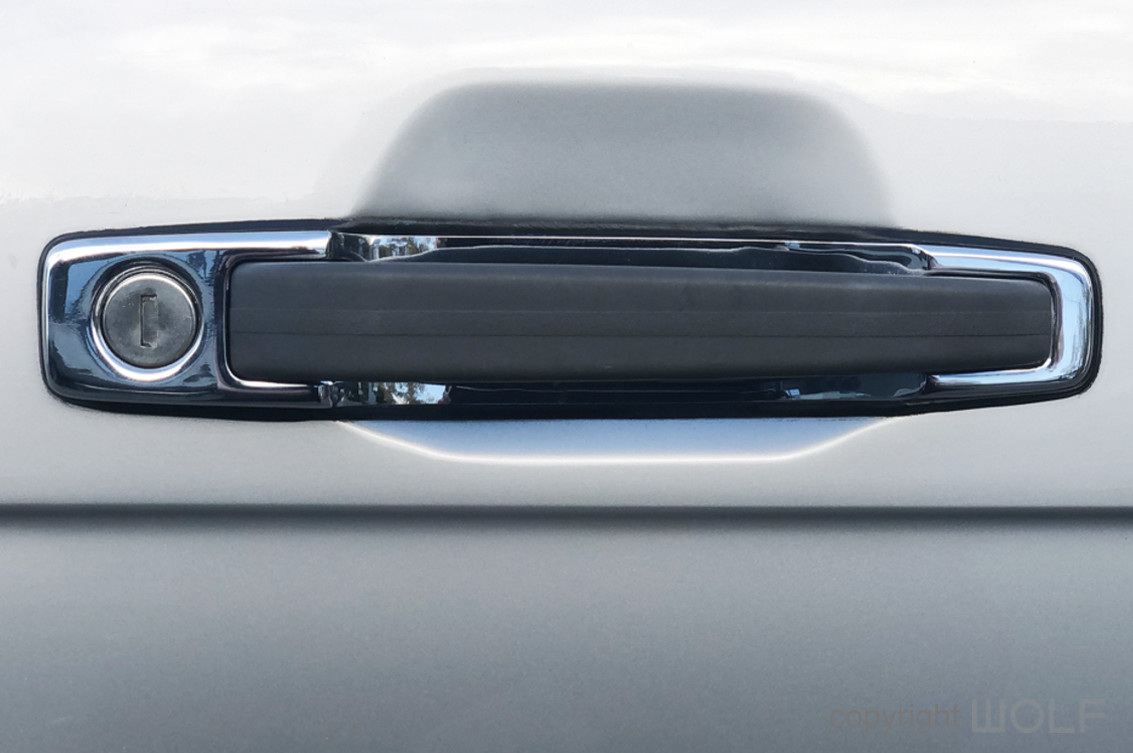

The facelifted model from 1986 onwards also received new door handles and wheels.
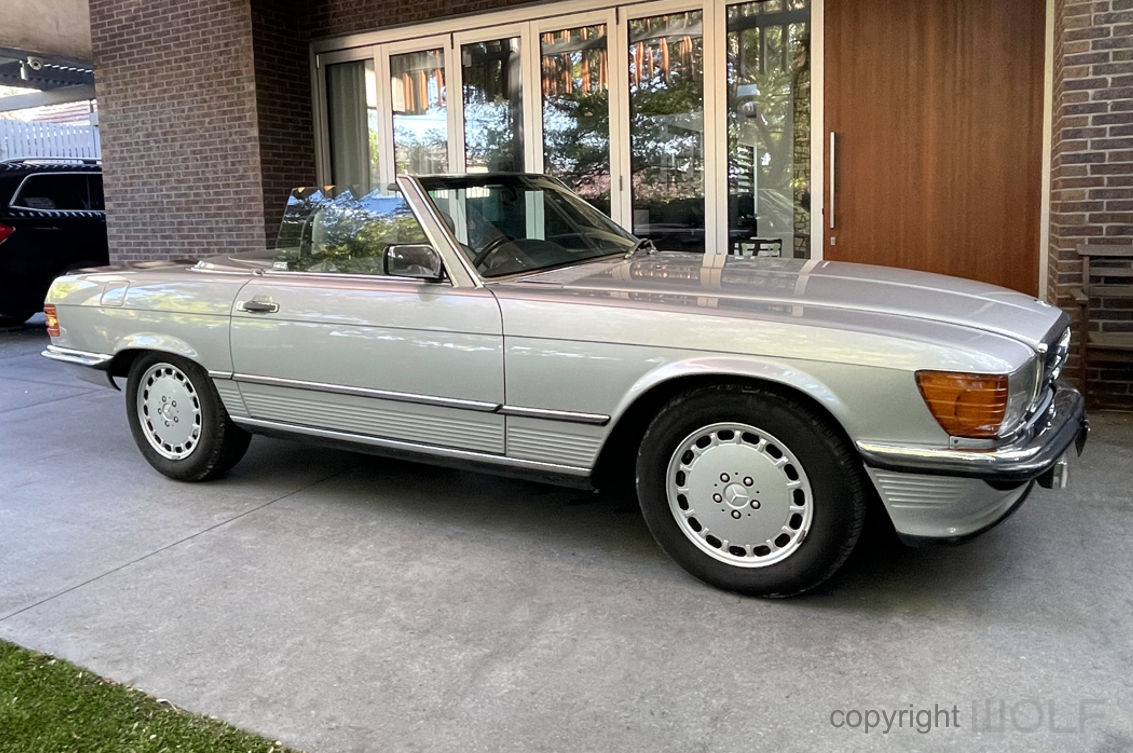
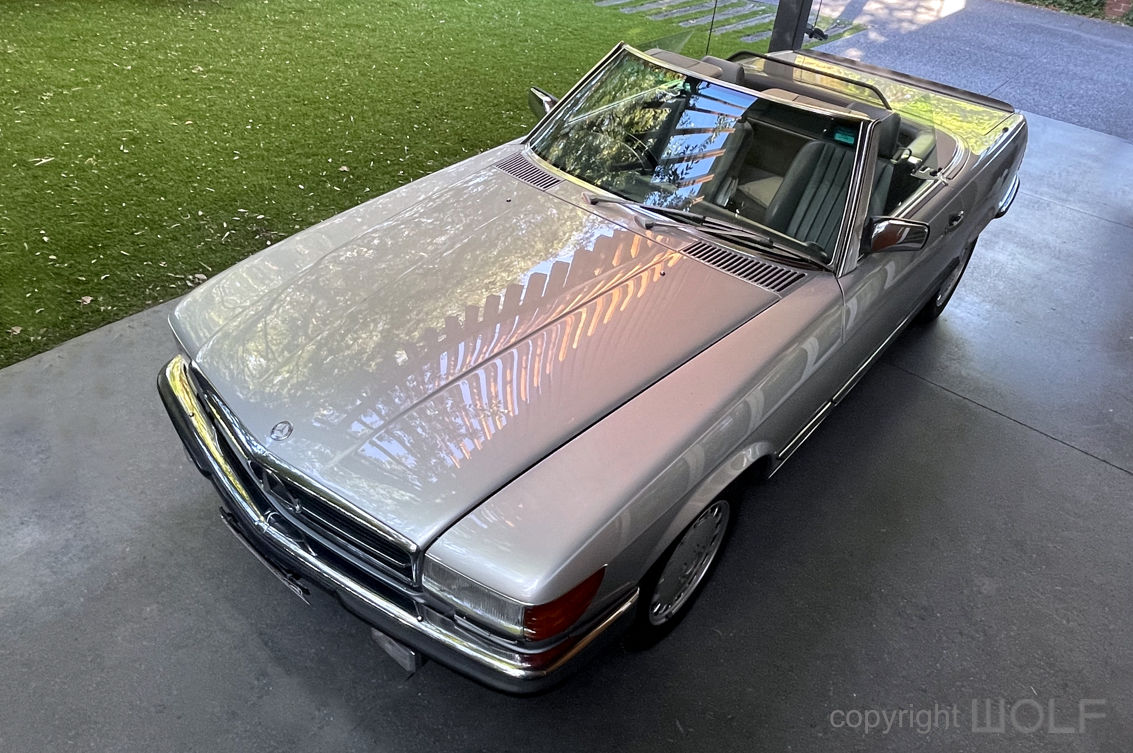
The R107 looks its best with top down.
Desirability – Collectability or Value for money
Most Mercedes cars begin to achieve classic status when they turn 30 years of age. That was definitely true of the W107 cars as many started to fall into collectors’ hands around the time of the new Millennium. However, the appreciation was not as consistent or sharp as you’d expect and that may have to do with the cars long production run. While the earliest cars were turning 30 years old, the last ones off the production line were still just 11 years old. Only in recent years have these cars really started to take off, especially as the former W113 Pagoda models become too expensive for the average enthusiast to collect.
Good low mileage examples do exist in reasonable numbers but you’d better be fast and ready if you’re to secure one.
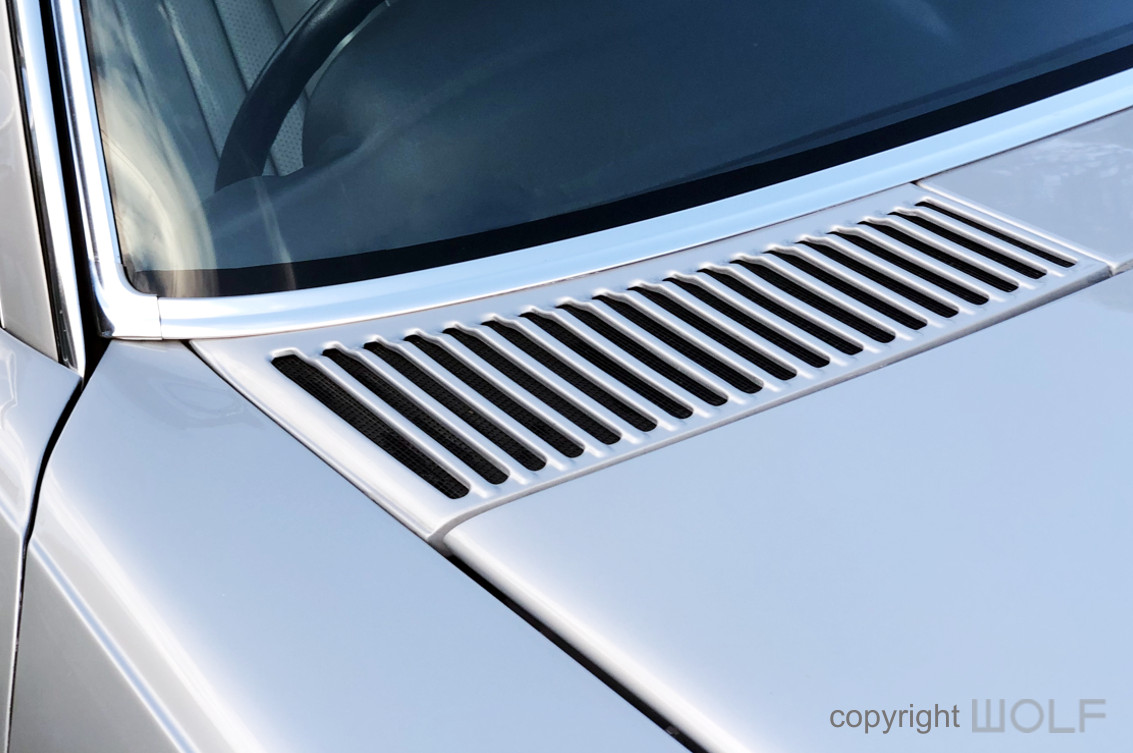
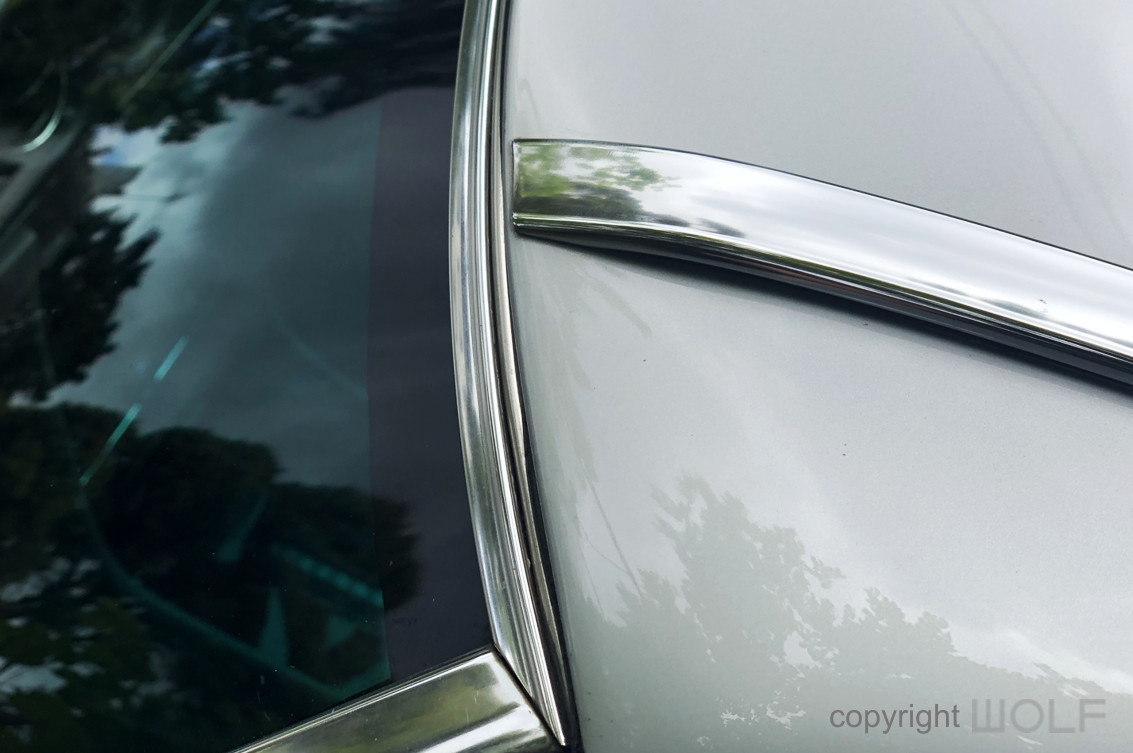
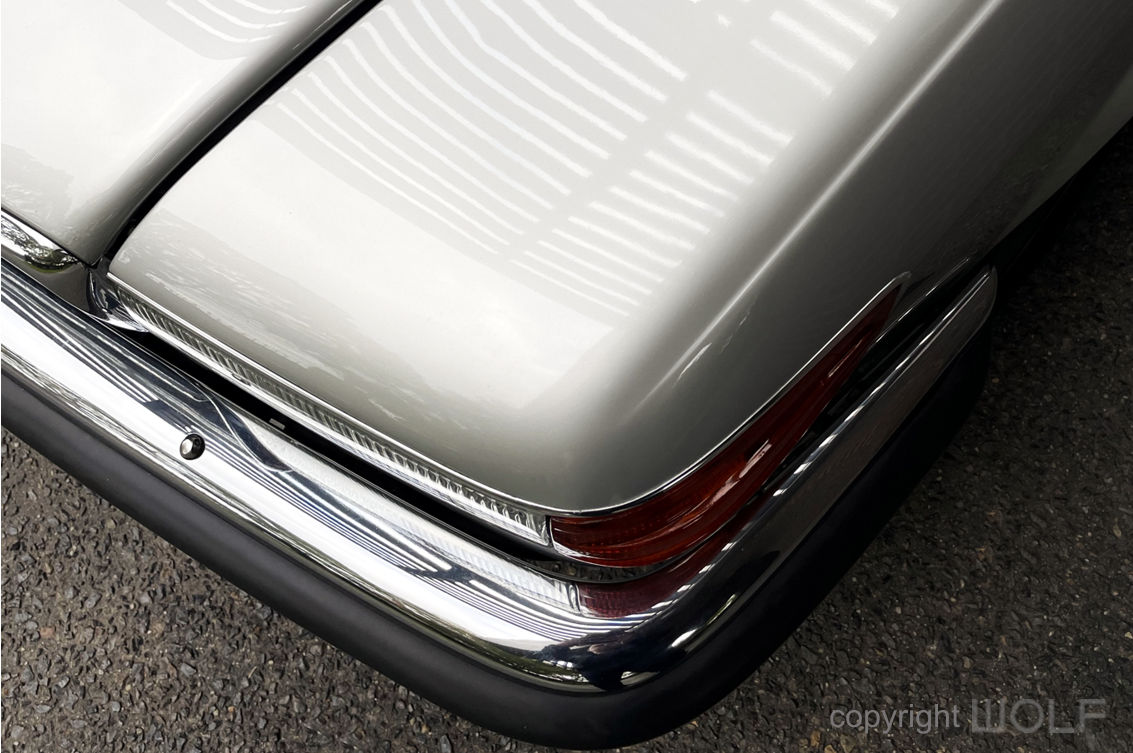
WORD OF THE WOLF
In our opinion the 107 SL looked dated from the moment it was launched. That was mainly due to expectations for a more wedge-shaped car as seen in Mercedes C111 experimental car (that never made it to commercial production). Furthermore, there were other cars on the market by Porsche, Ferrari, and Lamborghini with far more aggressive or streamlined shapes. By comparison the 107 was rather boxy and square. Rubber bumpers and chrome trimmings were no longer contemporary, especially into the eighties.
All that square geometry and chrome however, has now added to the cars retro cool looks and classic status. We think the car looks more interesting now than when new, and seems to be getting better with age.
The WOLF colour of choice for this car is silver, but it’s also quite stunning in darker shades with contrasting light interior. A top of the range 560SL is our recommendation as an investment and enough power to feel like a sports car.
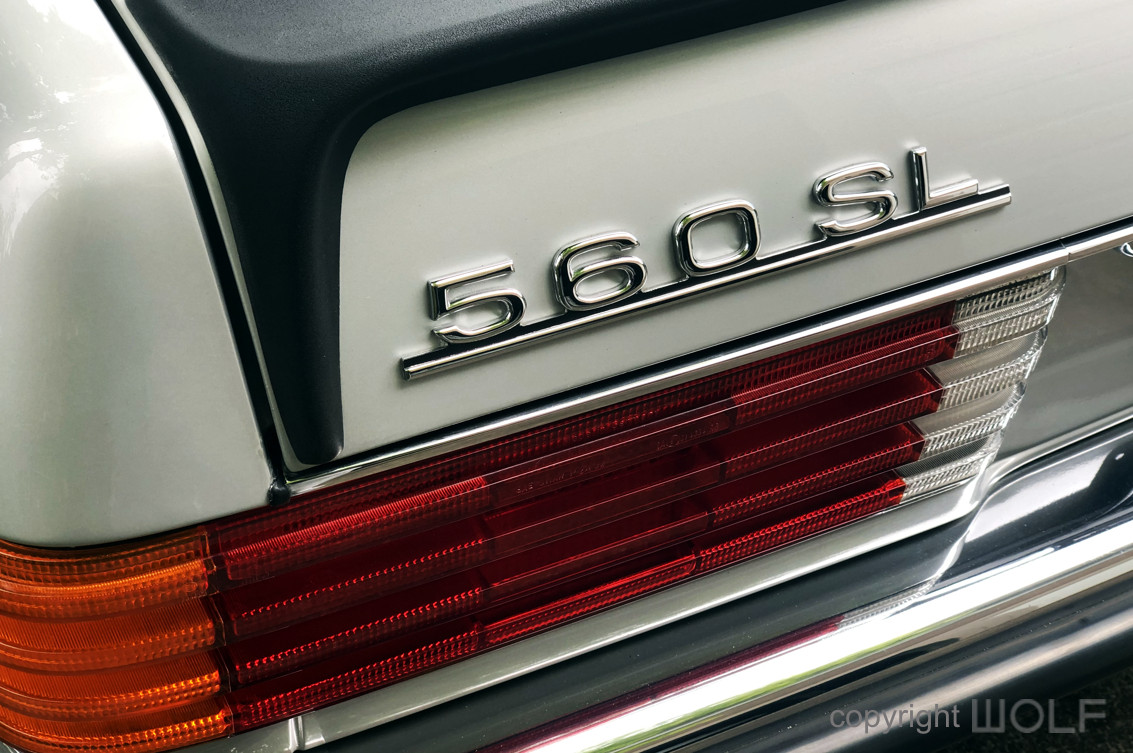
A spoiler that spoils the look.
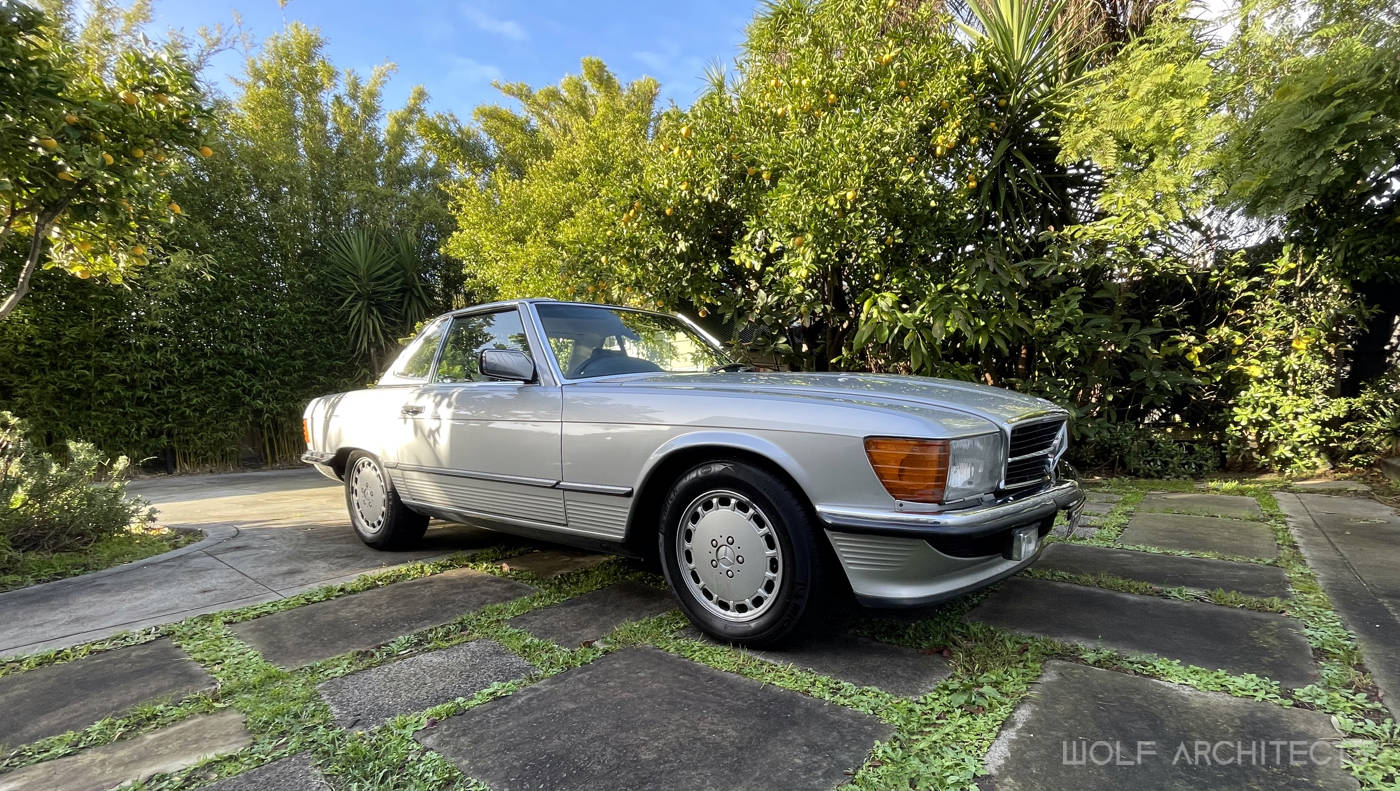
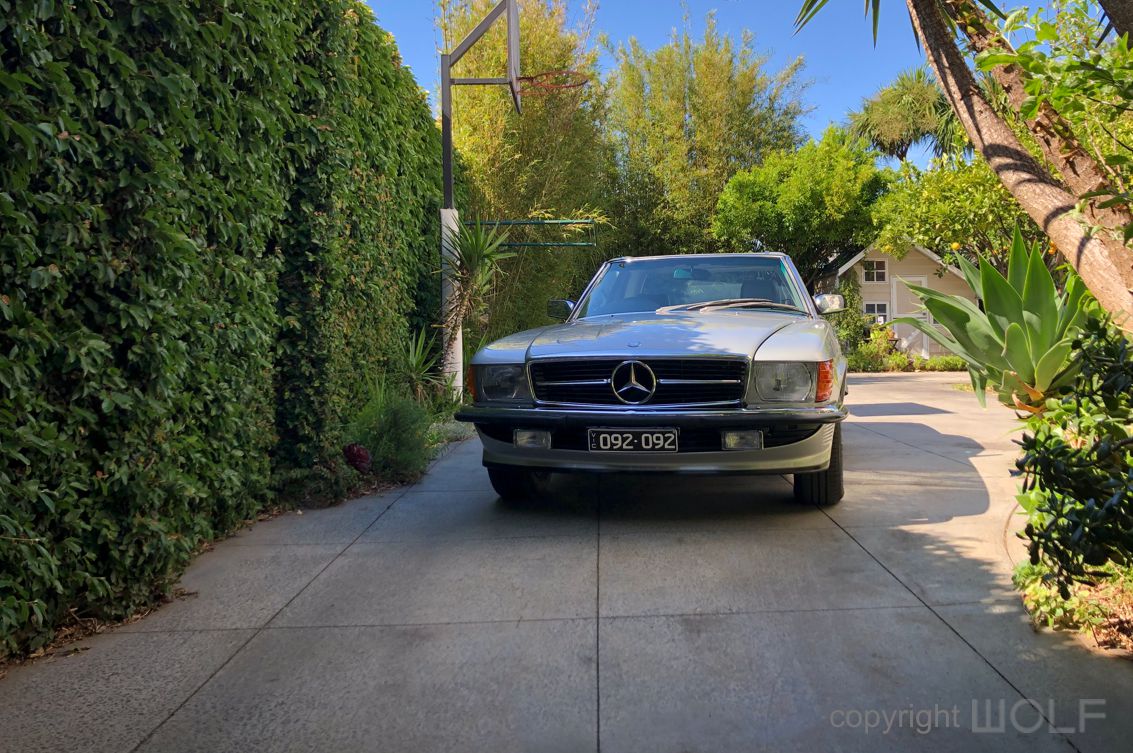

A late R107 brochure.

Among the many various lapel pins made for the R107 SL we particularly like this unbranded chrome plated die-cast model that is 28mm in length.
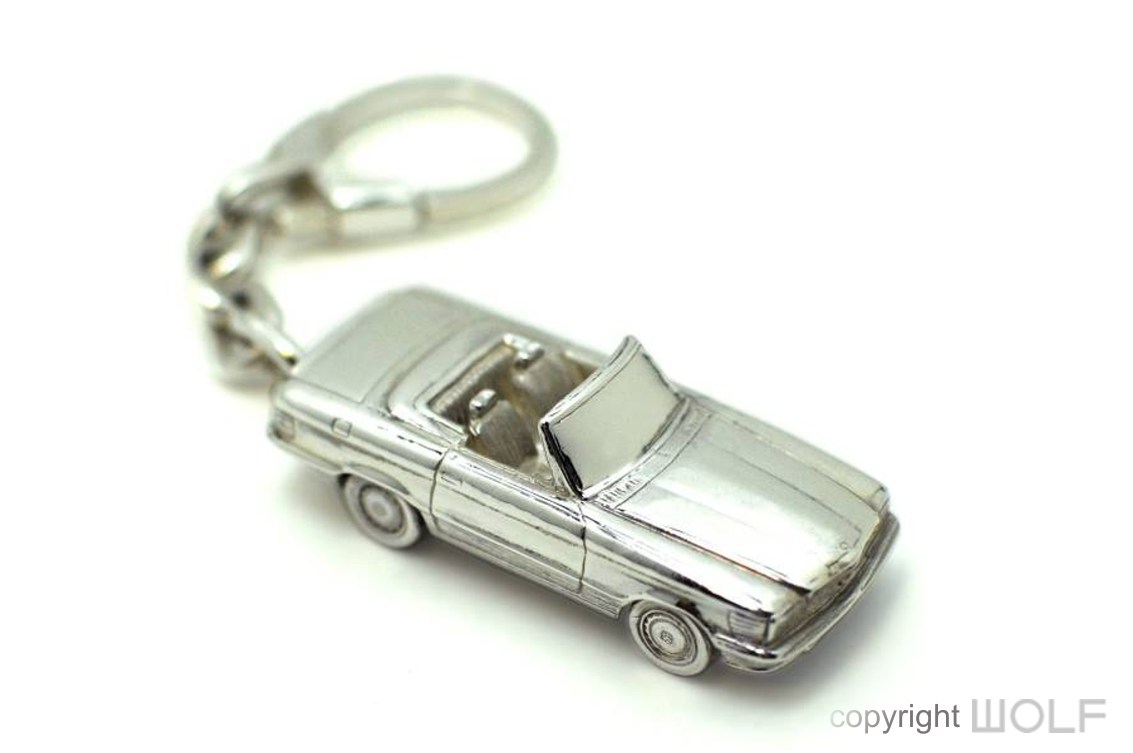
This Stirling silver key chain by JEIS Aoyama in Japan is hard to find.
WOLF DESIGN EXCELLENCE SCORE = 7.5
Disclaimer
The information in this review is intended for informational or educational purposes to provide readers an understanding of how something may be seen from a certain design perspective. In this case it is from the view point of WOLF DESIGNS. As design is subjective this review should only be considered as an independent opinion. Information further to being of an opinion is provided to the best of our knowledge based on our own research at the time of doing the review. We cannot be held responsible for any inaccuracies or inconsistencies and reserve the right to change or update any content as appropriate.
The final responsibility of the design resides with the original manufacturer.
Taras WOLF retro DESIGN REVIEW. 25th November 2019
A retro review looks at products that are at least over ten years old from a present-day WOLF design perspective. While the technology and fashion of the period influence design, and are taken into consideration, great design ideas will transcend their eras to be timeless.
Interesting and factual information may be provided, but our review aims to deliver insight from the perspective of a designer’s mind and eyes.

A forgotten plain Jane
Introduction
Product Focus
As with most reviews the focus is on the design and its evolution with the synthesizer. The functioning systems and sound quality are not necessarily not considered.
Product description
The Yamaha W7 is a workstation and successor to the highly successful SY series. It was released in 1994 together with the W5 which is almost identical except that it has one more octave. This was the first time Yamaha released two variations of the same machine to give customers a choice between 61 and 76 keys [Todays models are normally released with 61, 76, and 88 Key variations].
Price and Availability.
They were not popular because they did not appear to offer much more than their predecessors. With no major technological advancement or design developments, musicians mostly decided to hang on to their SY synths or turn to other manufacturers like Roland and KORG. As such they did not sell well and this has made them quite rare. The W7 is more commonly found than its bigger brother and is worth between $250 and $450. We would expect to pay $500+ for a mint example that comes complete with accessories such as original case, manuals, pedals and sound disks. There was a Version 2 upgrade which was distinguished only by a golden sticker that said “Version 2”.
Additional information
Unlike the previous DX and SY ranges where Yamaha profited over many smaller models, there were no other spin offs designated with a “W”. There was the QS300 released shortly afterwards which beared some resemblance to the W7 in size and design. Unlike most other Yamaha synthesizer ranges the W series had no rack module equivalent which was probably due to its lack of popularity.
Review
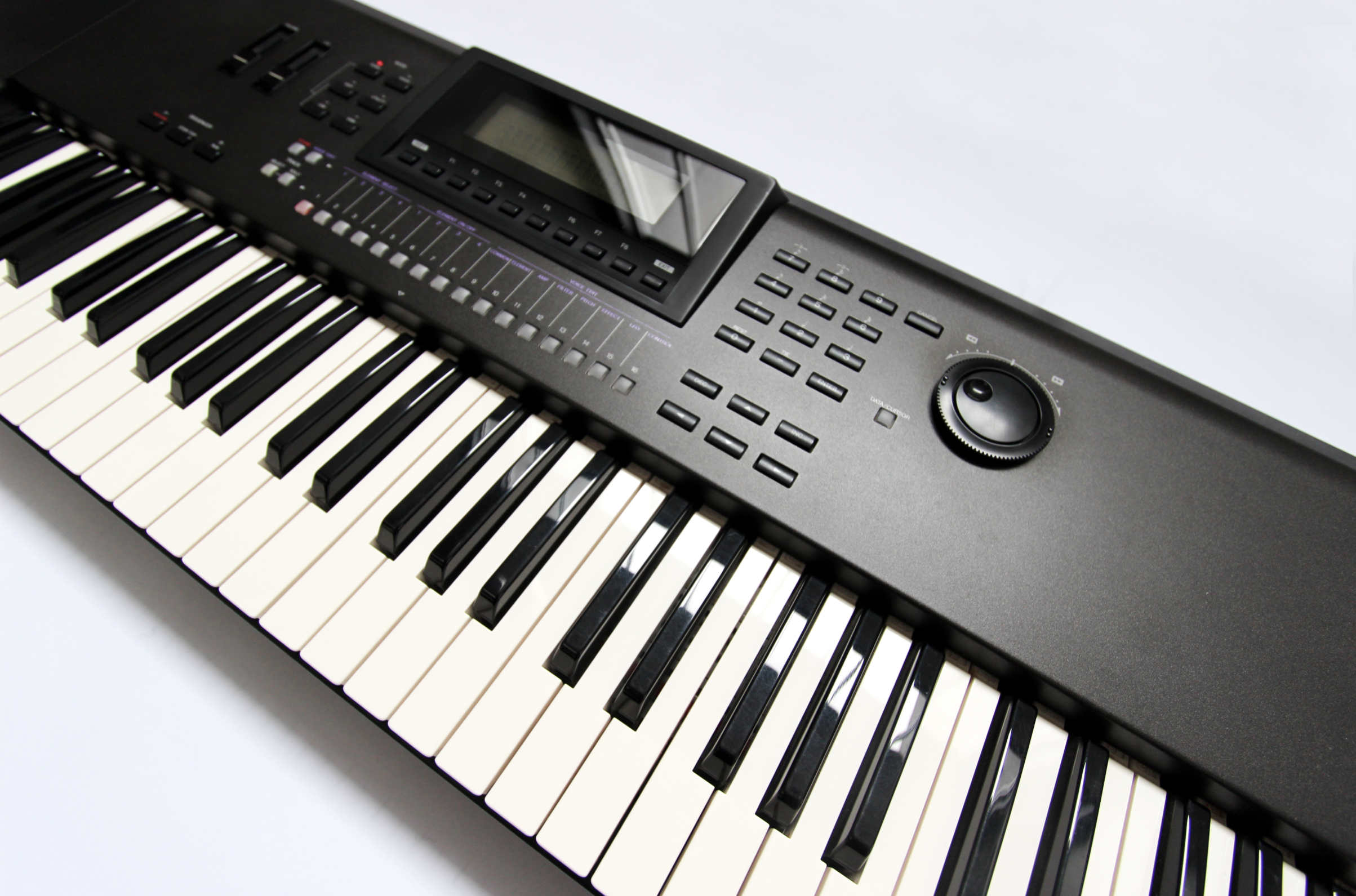
First impression/ Delight
We reviewed the W7s big brother (the W5) two years earlier and many of our views remain the same today as they did back then. The W synths look rather basic and not a big leap forward from the previous flagship model. The screen remained the same as previous models, and at a time when KORG produced synths with screens twice the size, Yamaha’s screens across all their product range at that time were inadequate by comparison.
Exterior Design Review
At first it appears to be a similar colour to the SY series, but on closer inspection there is a slight metallic silver in the black. This slight colour change is important as Yamaha has a tradition of introducing a new colour with each new Synthesizer range. The end panels have evolved from previous models to be simpler with a rounded off wedge shape. Upon closer inspection we came to appreciate the subtle beauty of this shape. It’s simple, gentle and nice to touch. The screen is one feature that stands out. While it’s the same size as the previous SY77 & SY99 models it is housed in a frame that angles it up from the main panel for easy reading. It looks almost as if it were meant to be adjustable but unfortunately is fixed. The other distinguishing characteristic of the W5 are the 16 small white translucent buttons under the screen. While they look like cute little sweets, they functionally a bit small and don’t feel so nice to press. They are also spaced a bit close together and we noticed that they often require servicing.
With so much space on the front panel it seems odd that the designers did not spread things out more or use larger buttons. Perhaps that was part of the minimalistic design trend of the mid 1990s. We don’t feel the button arrangement was well thought through and as a result the front panel looks rather empty and plain. Having said that the W7 looks more balanced to us than the longer W5. The expanses of flat metal are less vast and help the concentration of buttons look more proportionate.

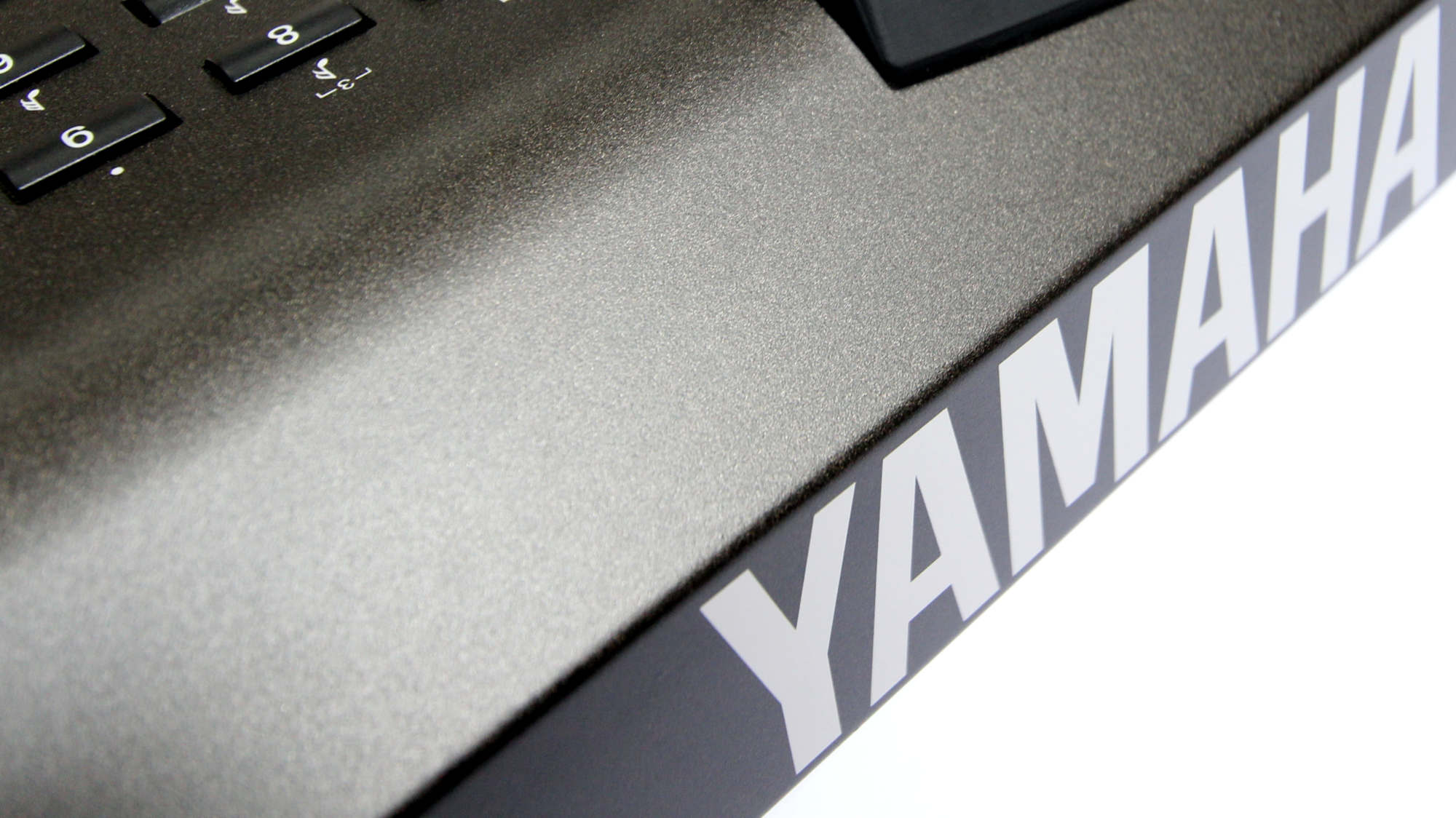
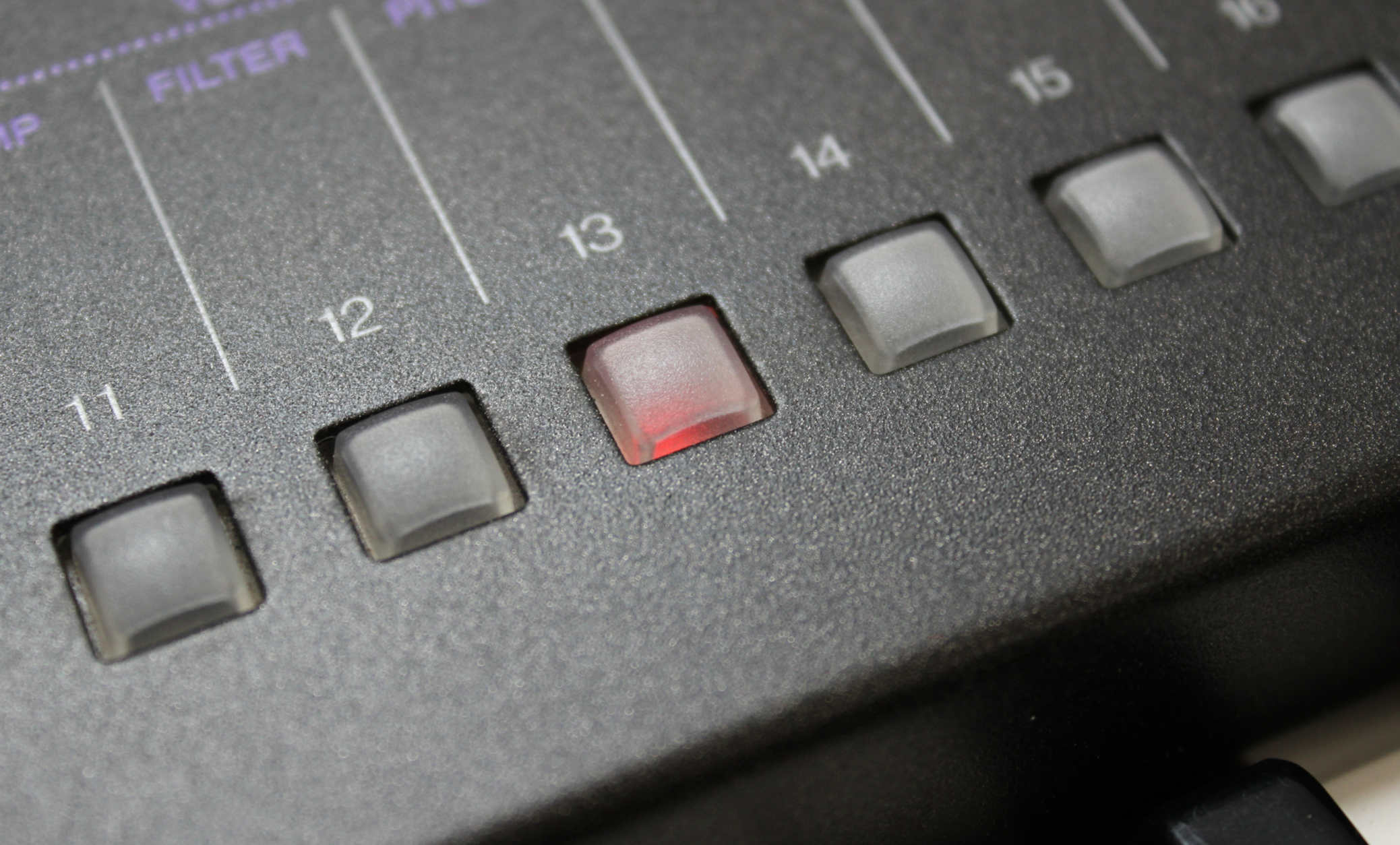
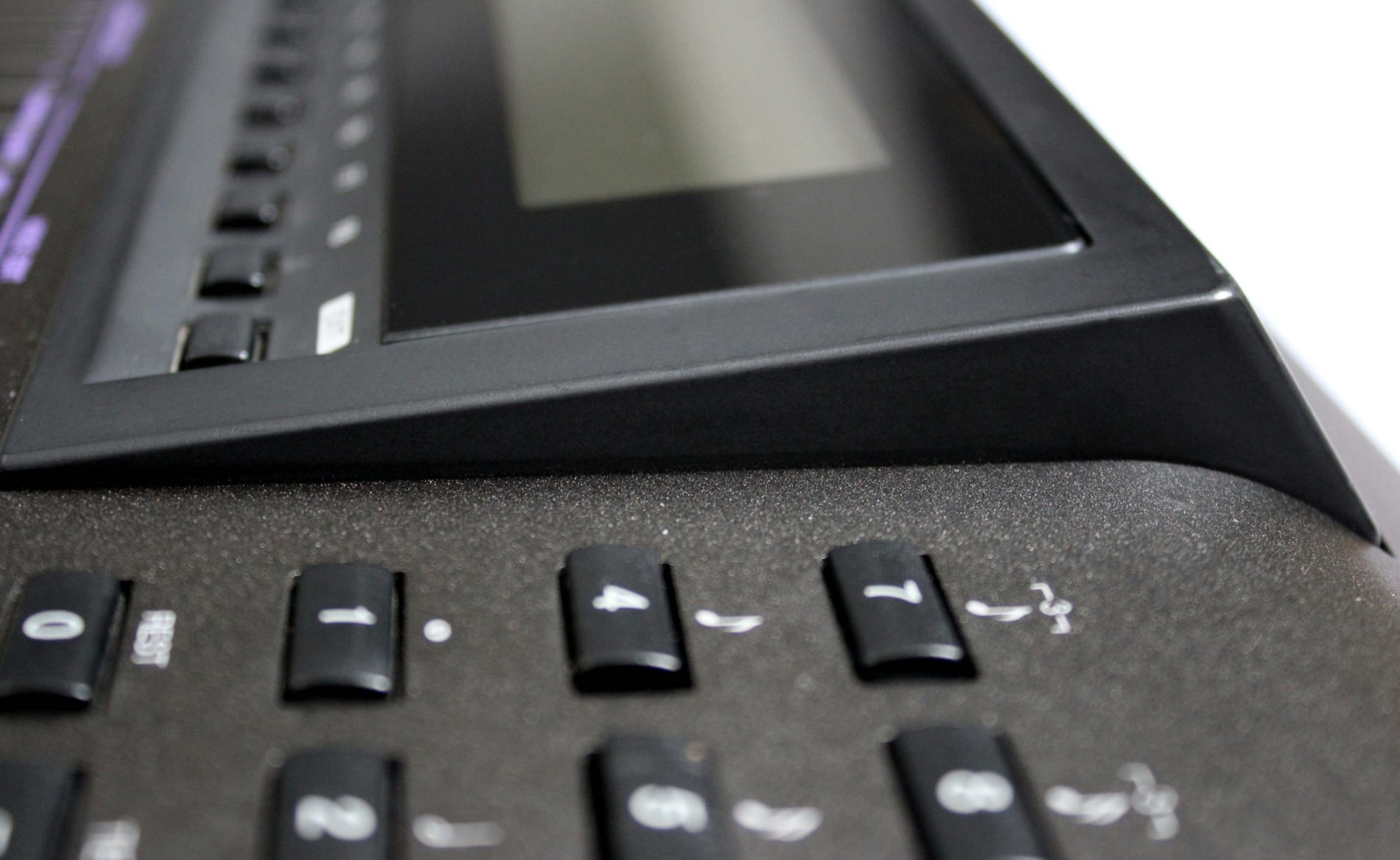
Craftmanship.
The W7 is put together well, as you would expect from most Yamaha products. The end panels fit flush and neat making it very clean and minimalistic. The main front aluminium panel does feel thinner somehow and the large flat surfaces are probably not as rigid as previous models. Most of the ones we’ve seen have scratches and dints. The keys on most also tend to be a little more yellowed than previous models. All this suggests that the materials used may have been cheaper and less durable
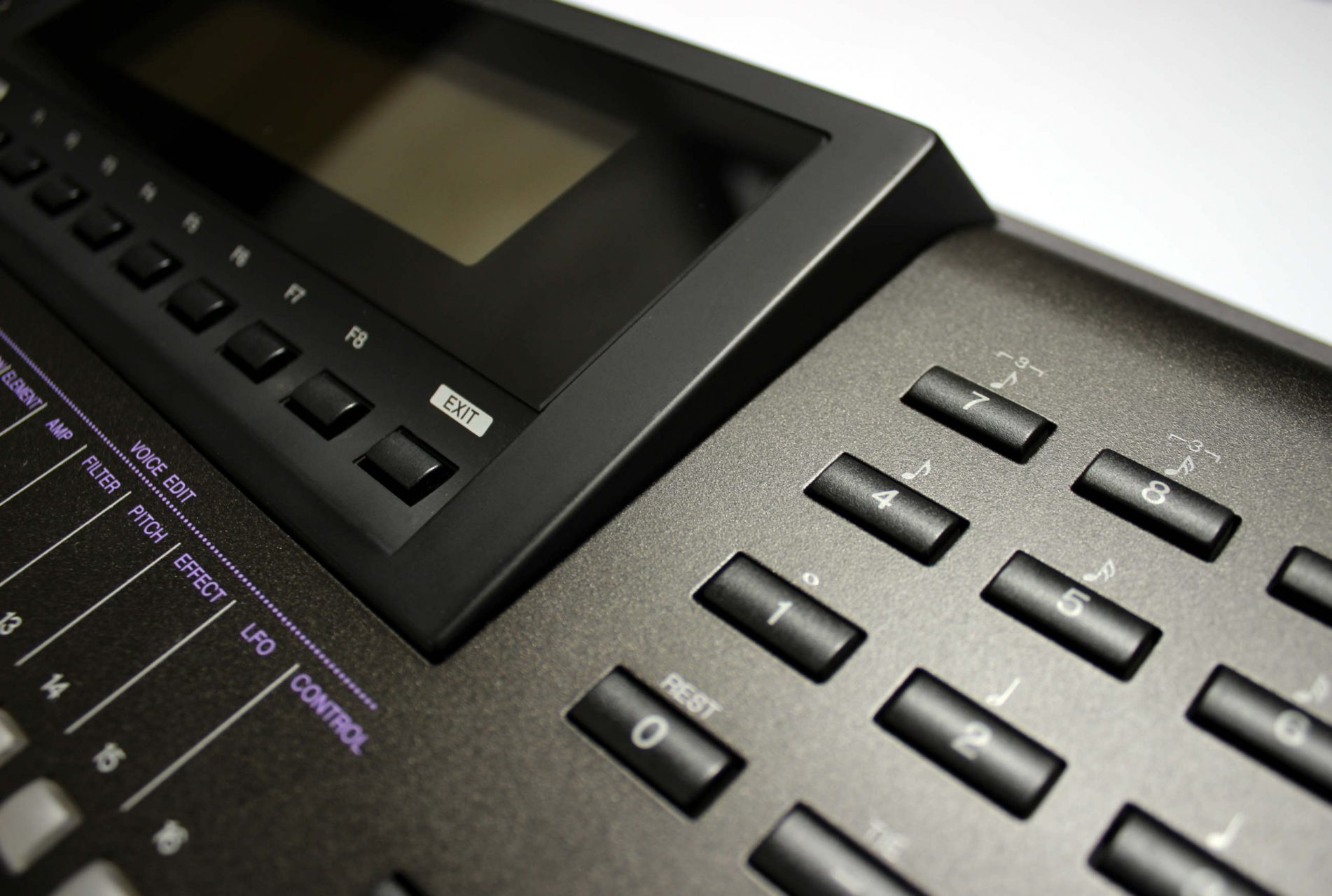

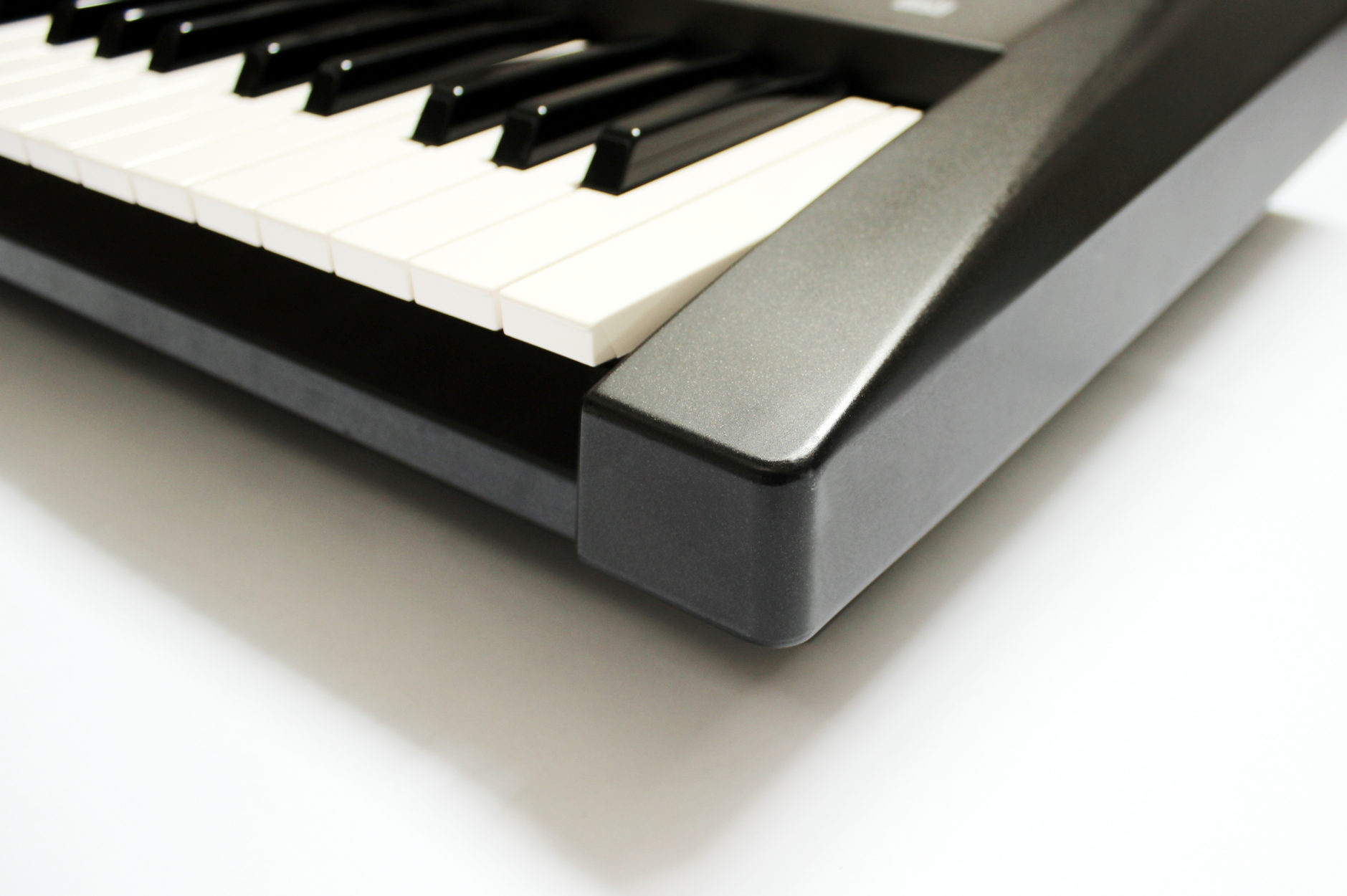
FUNCTION- Experience.
Our research tells us that the W5 was not a breakthrough in anyway. It was more of the same in a new package that looks underwhelming. We felt the screen is too small and the buttons don’t feel nice to press. The front panel arrangement is too condensed into one area and feels insufficient for a flagship model.
The new positioning of the disk drive looks neater that the SY model and does away with all those busy lines, but as a result has lost that clever space for holding a few disks which was rather useful.
The W series also introduces a new double alpha dial. While this seems clever it is confusing and Yamaha never used it again on future models.
The Yamaha W synths also reverted back to just two controller wheels, but they introduced a rubberized texture (first released the previous year on the VL1), which was a nice touch and significant improvement over the all previous wheels.
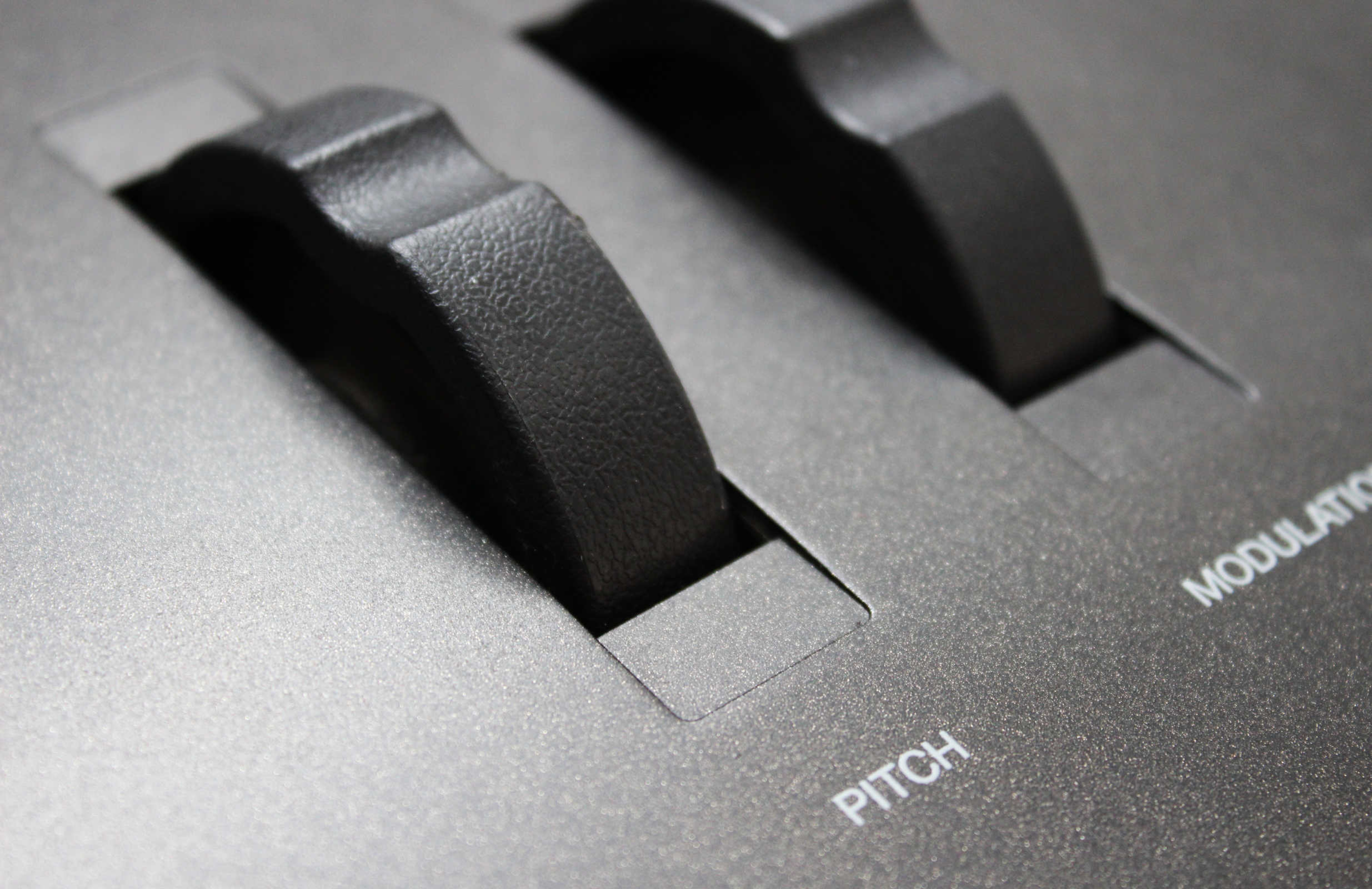
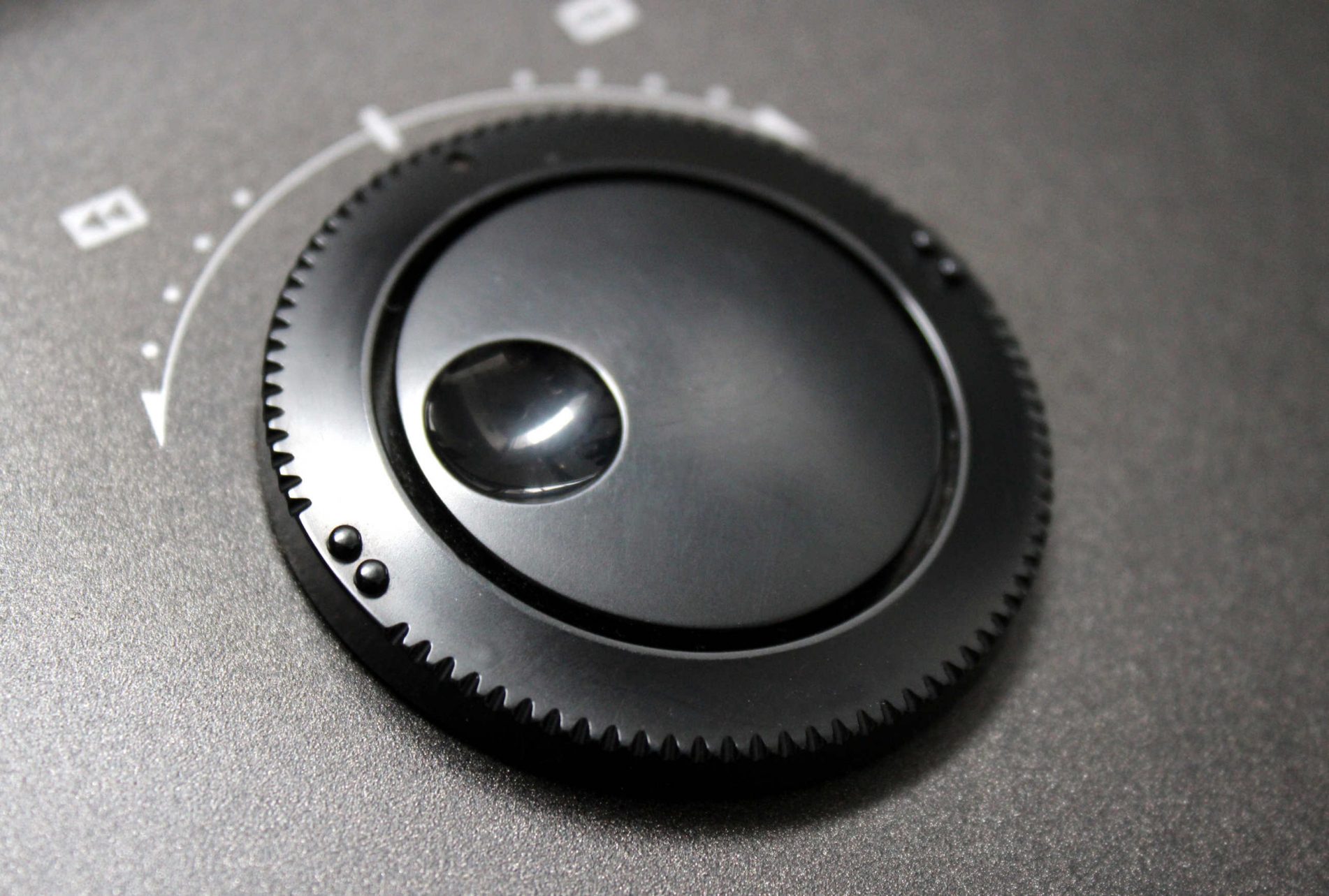
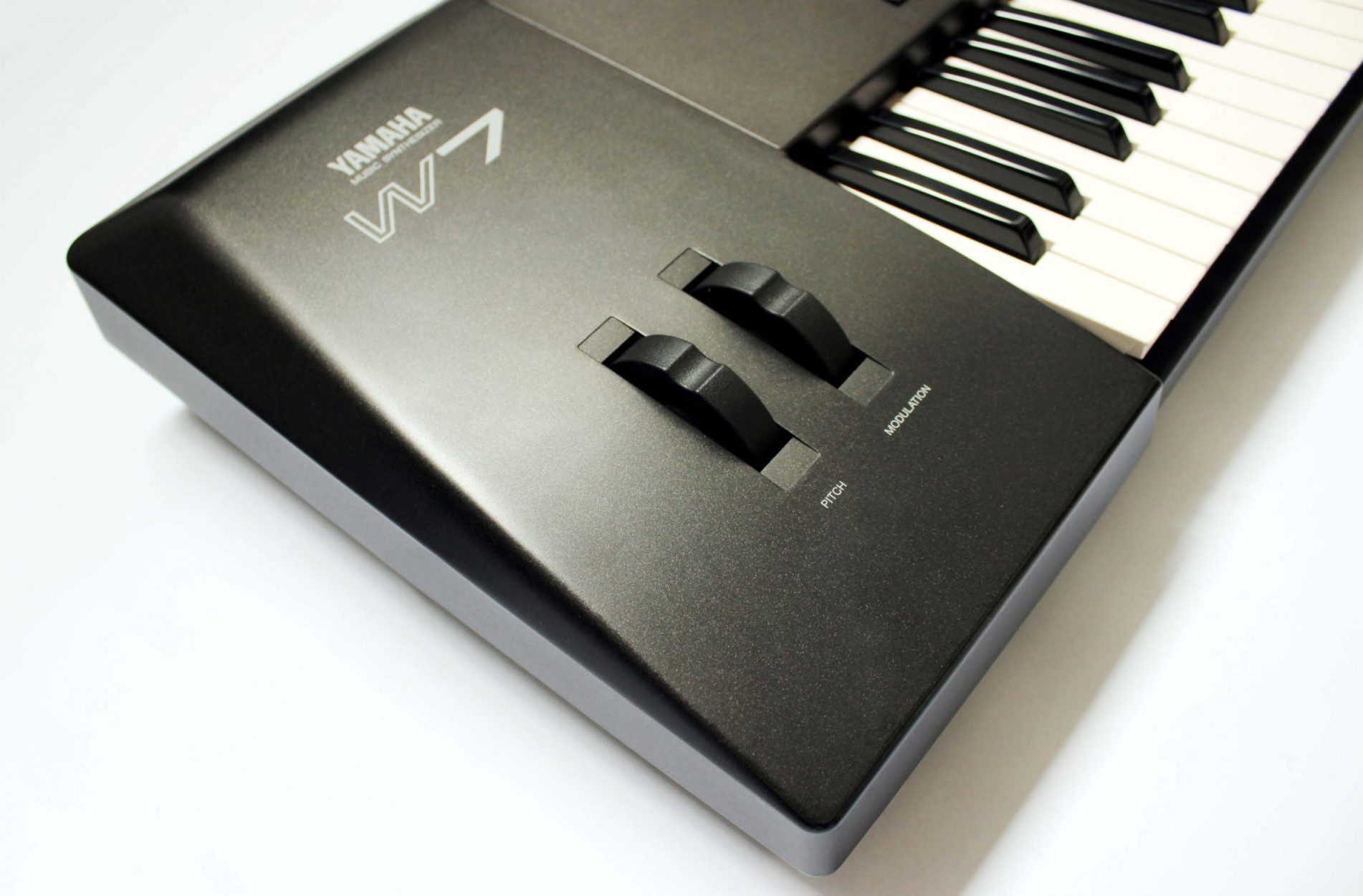

Desirability / Collectability
The W7 is not as rare as big brother W5 but still scarce due to poor sales. It is still a powerful machine that had remained undervalued. It’s unlikely to significantly rise in value given that it was not a breakthrough in any way. Even from a design perspective its rather bland compared to most other models. All those flat surfaces mark easily so it will be hard to find clean units.
This is probably going to be the Yamaha flagship synthesizer that most will forget but we will make mention that it is probably much rarer than most other Yamaha synthesizers. The Version 2 will be slightly more valuable than the Version 1. At the time of this review we could not find any images of the original case for this machine.
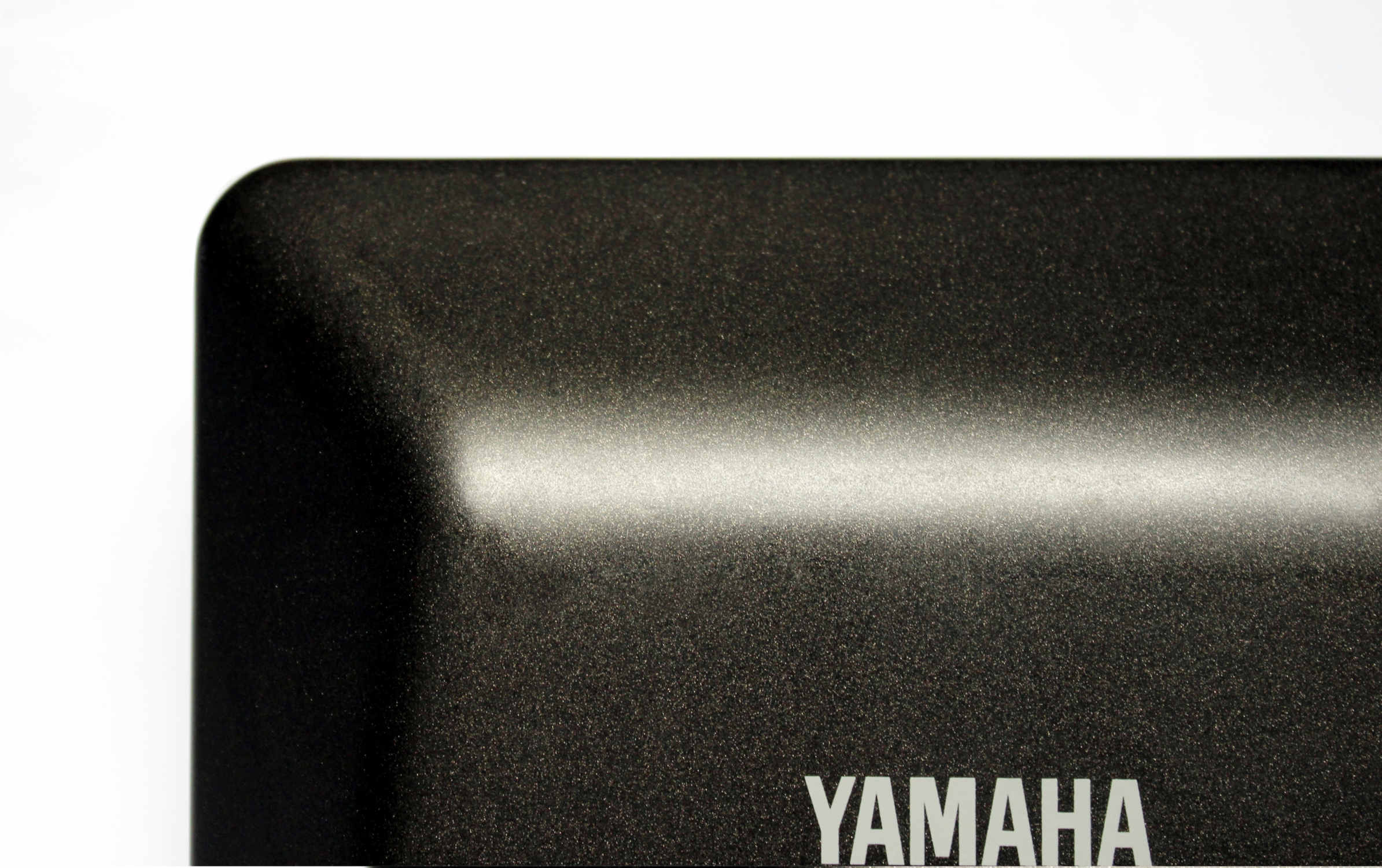

WORD OF THE WOLF
It almost seems as if this synthesizer was forced onto the market because the SY99 was getting a bit old and they needed a new product to compete with other brands. In hind sight they probably could have just given the SY99 an upgrade until the EX5 model was ready and available in 1998.
Nevertheless, the W5 & W7 still form a part of the Yamaha’s Synthesizer story and if you do find yourself in front of a mint specimen it would be worth knowing that they are very rare. People are not going to rush into buying them when they come up for sale, so most likely you could demand a bargain.


The WOLF W7
The W7 was one of the last synths to complete the WOLF collection. While inexpensive they are rare and even more rare to find in Mint condition. Two specimens were purchase so that parts could be swapped to make one near mint example.
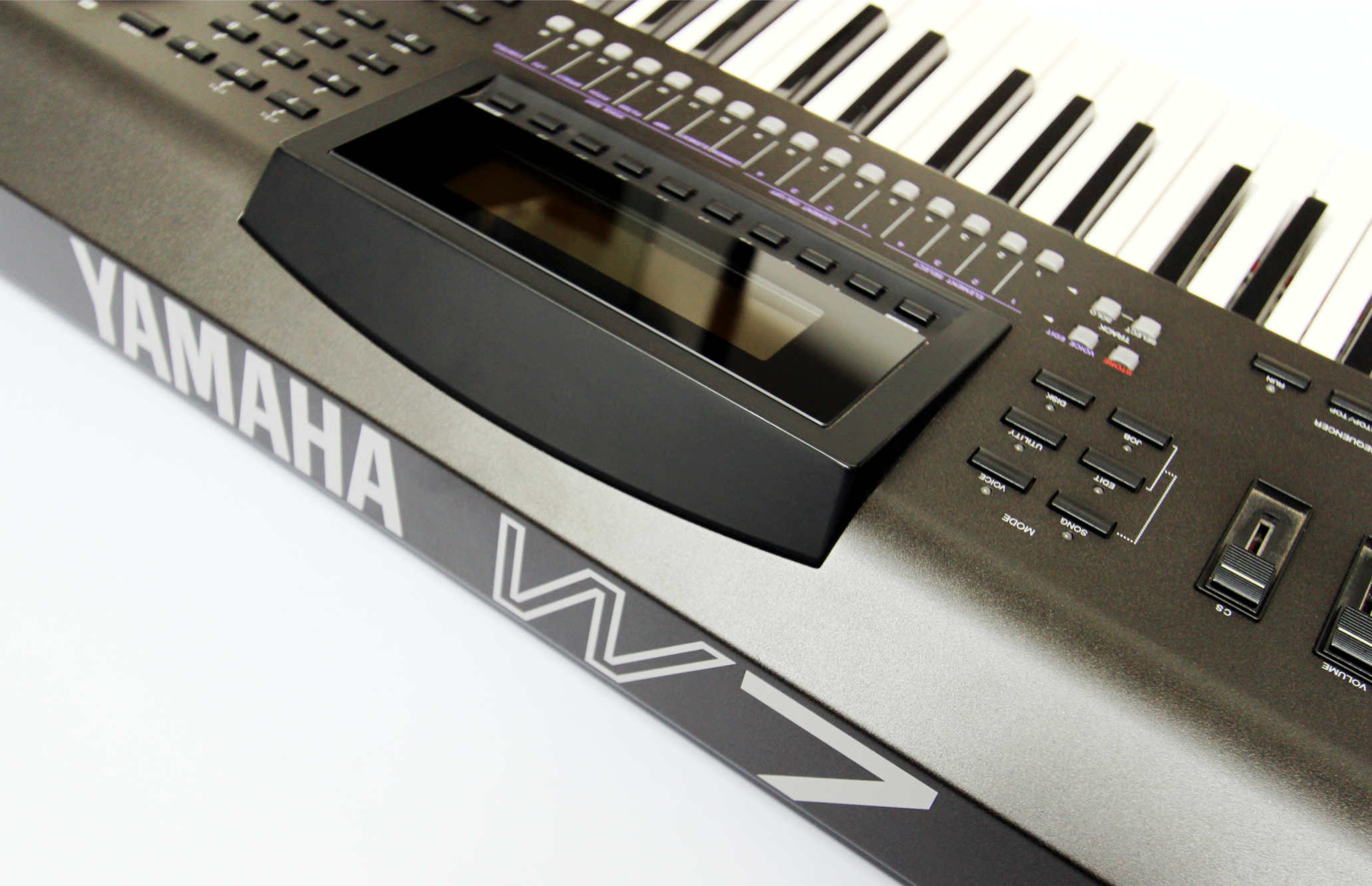
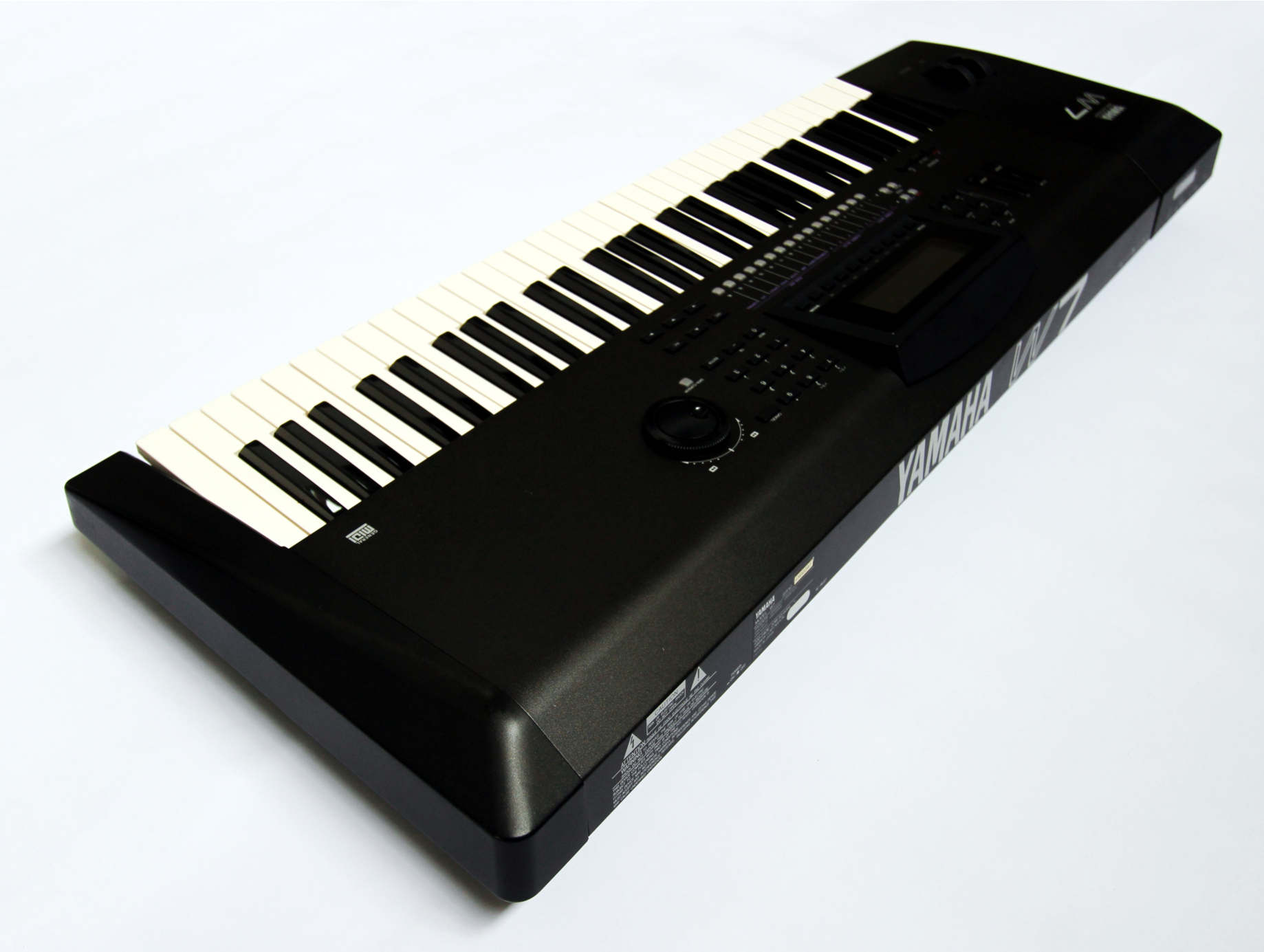
WOLF DESIGN EXCELLENCE SCORE = 5.8
Disclaimer
The information in this review is intended for informational or educational purposes to provide readers an understanding of how something may be seen from a certain design perspective. In this case it is from the view point of WOLF DESIGNS. As design is subjective this review should only be considered as an independent opinion. Information further to being of an opinion is provided to the best of our knowledge based on our own research at the time of doing the review. We cannot be held responsible for any inaccuracies or inconsistencies and reserve the right to change or update any content as appropriate.
The final responsibility of the design resides with the original manufacturer.
